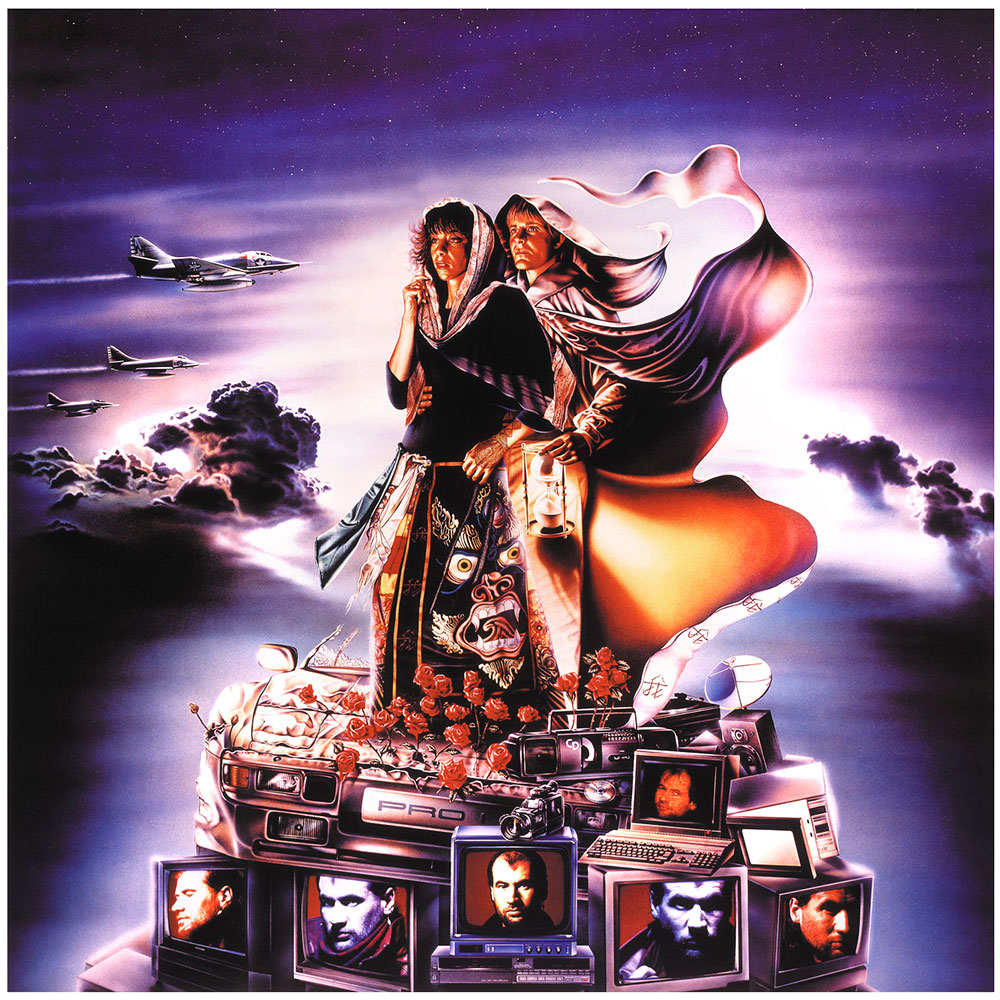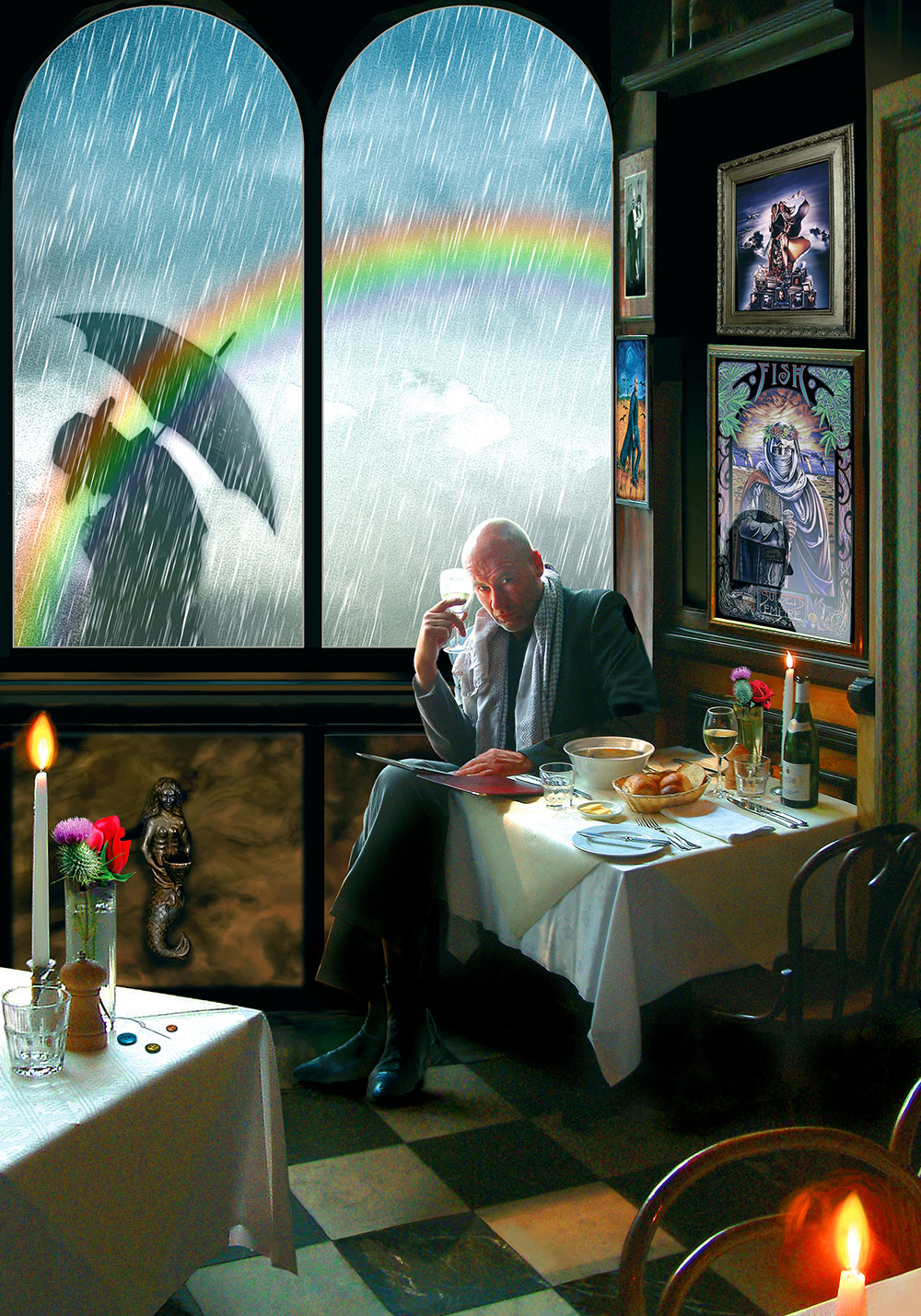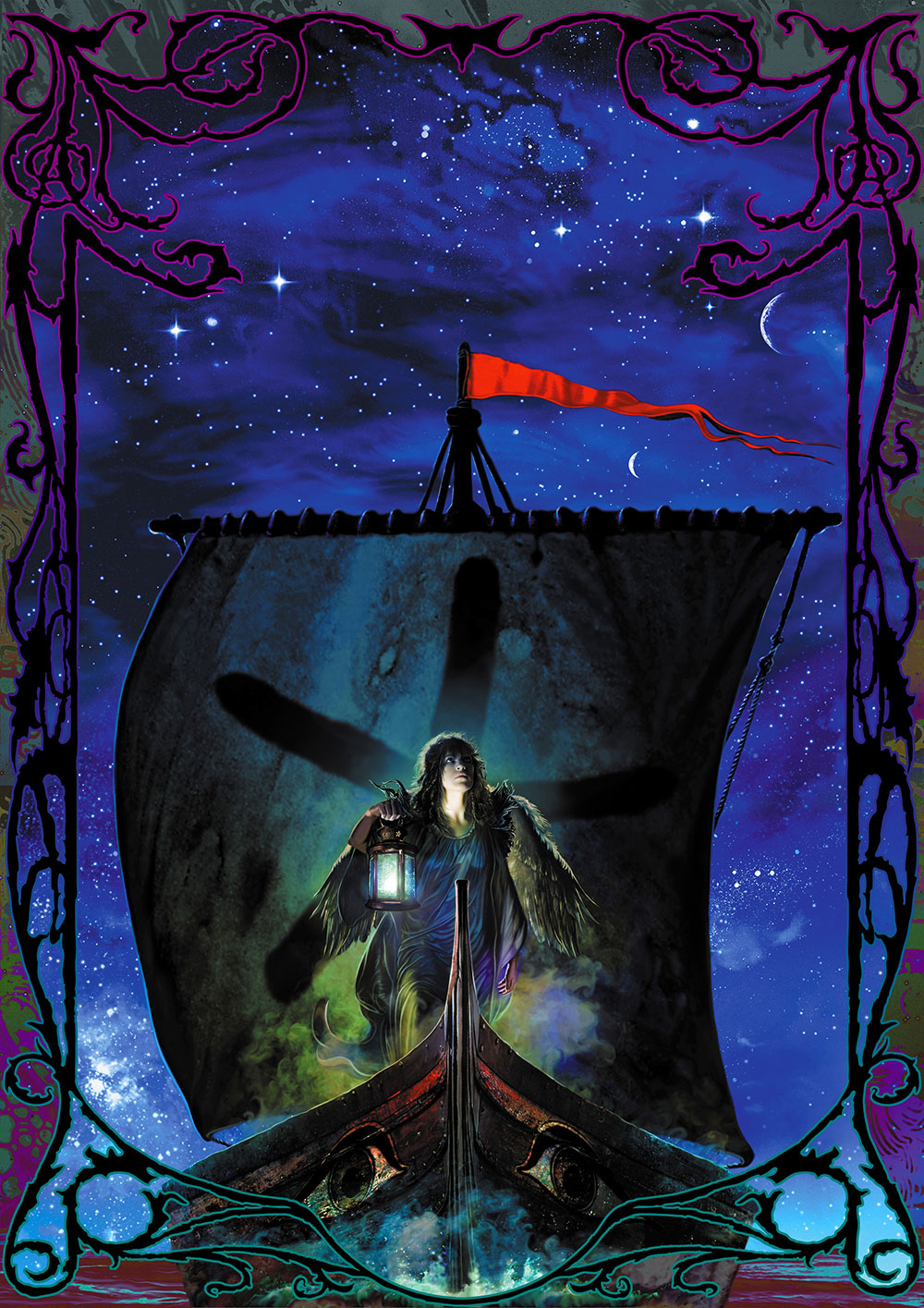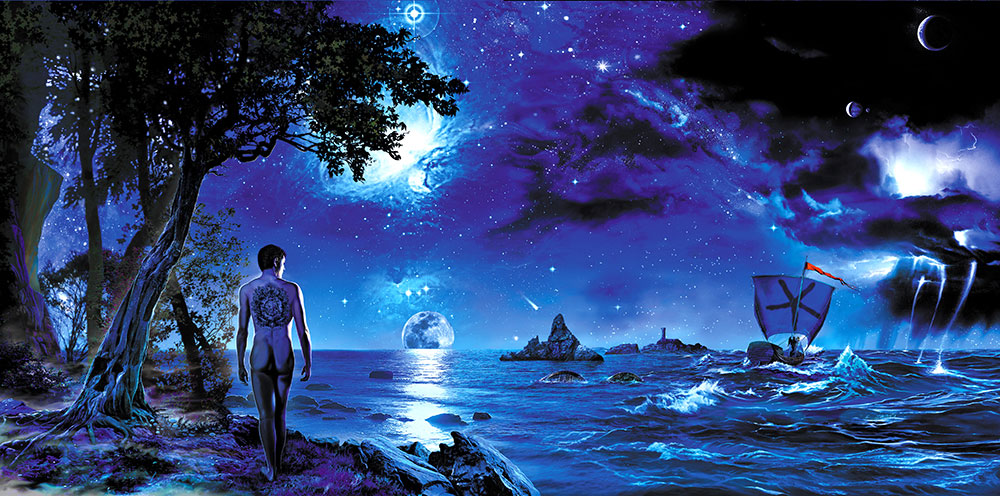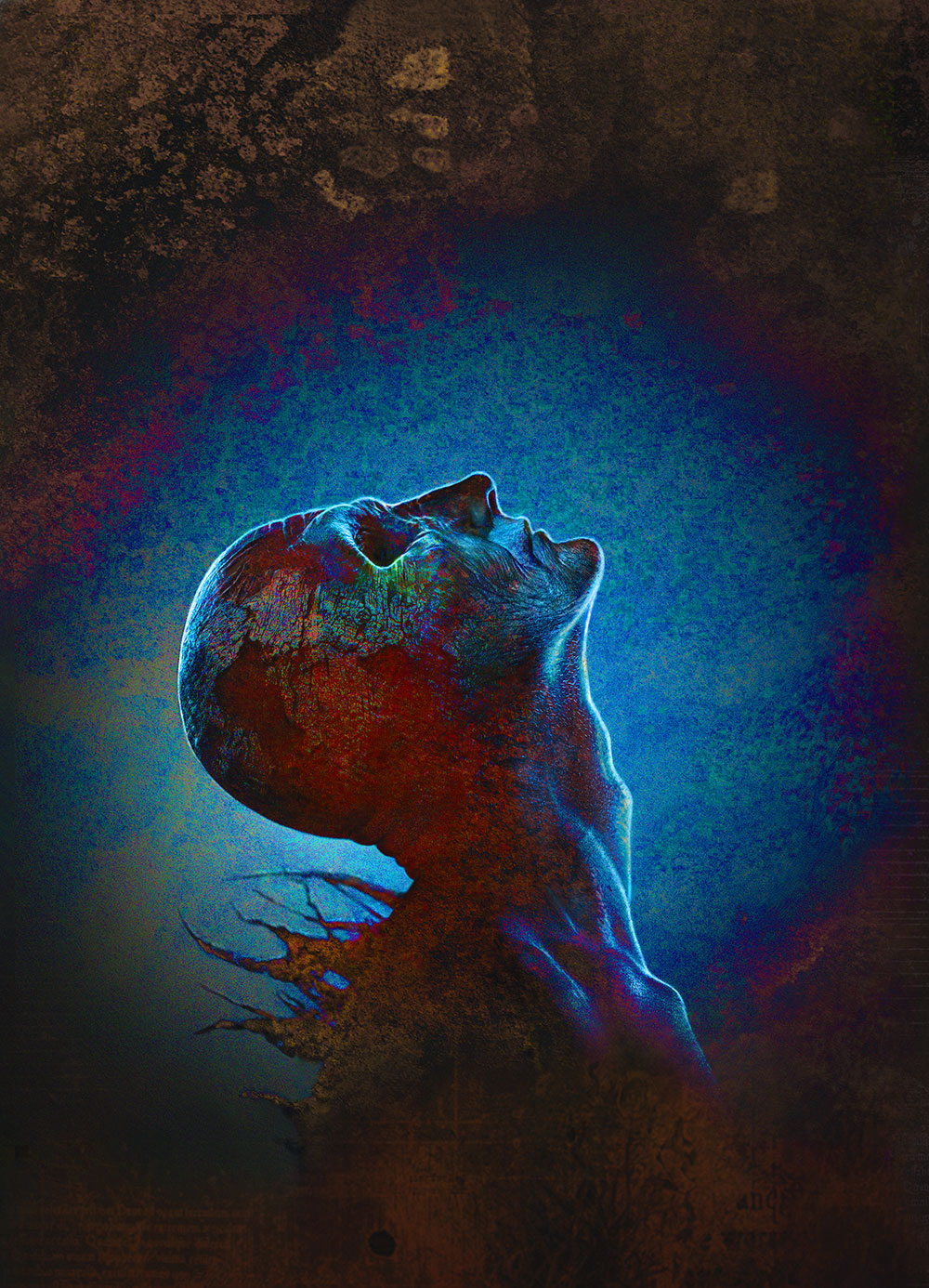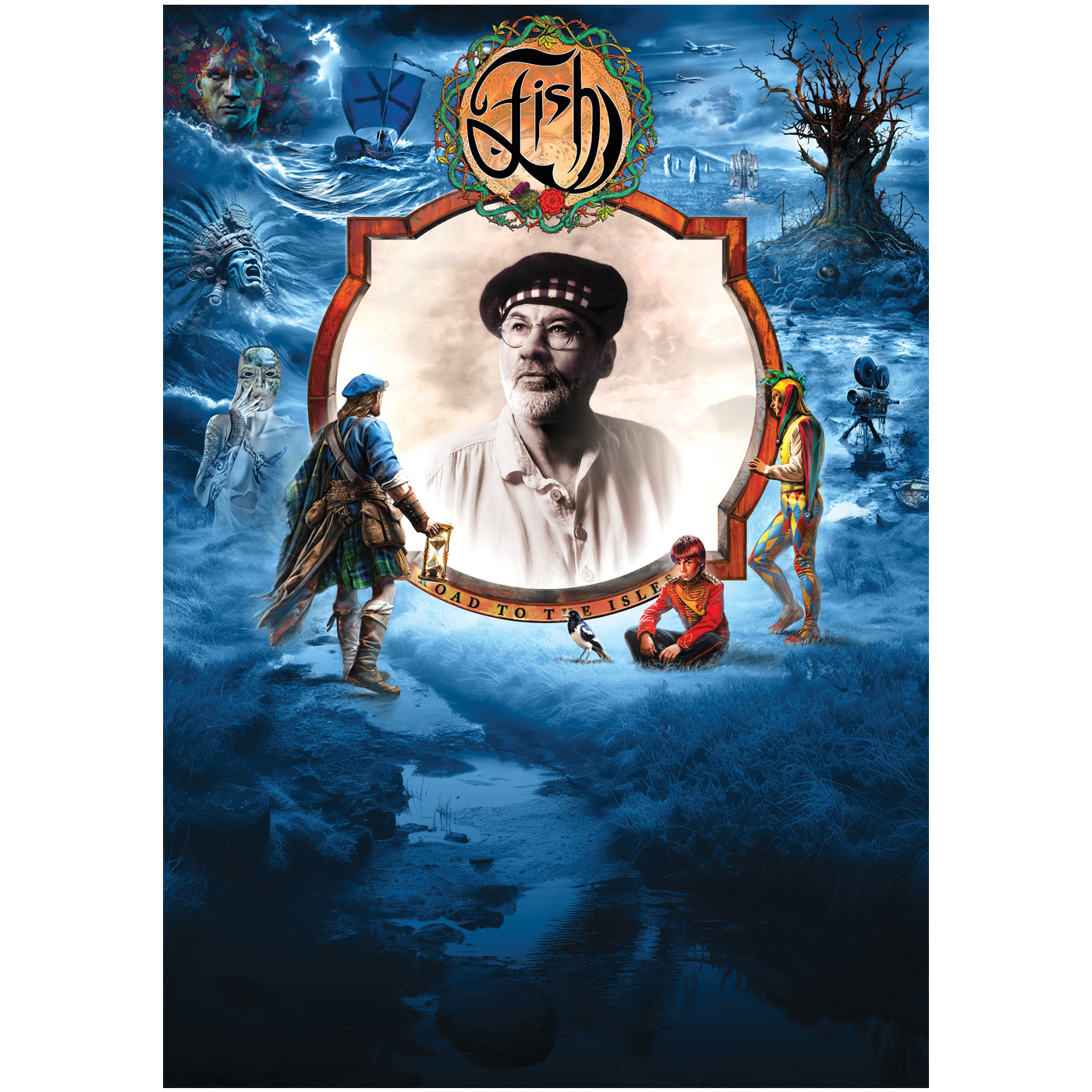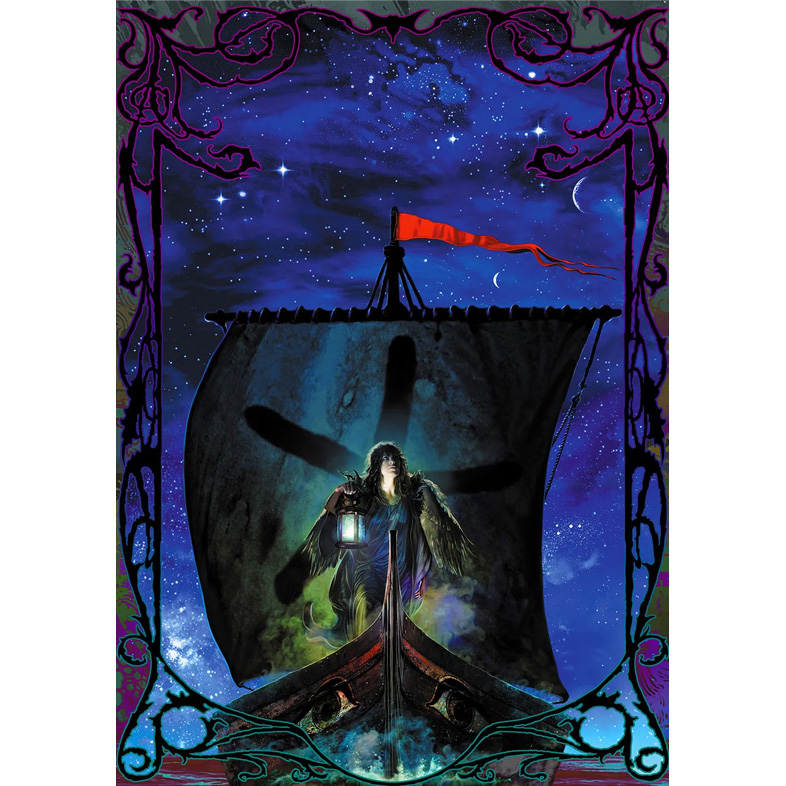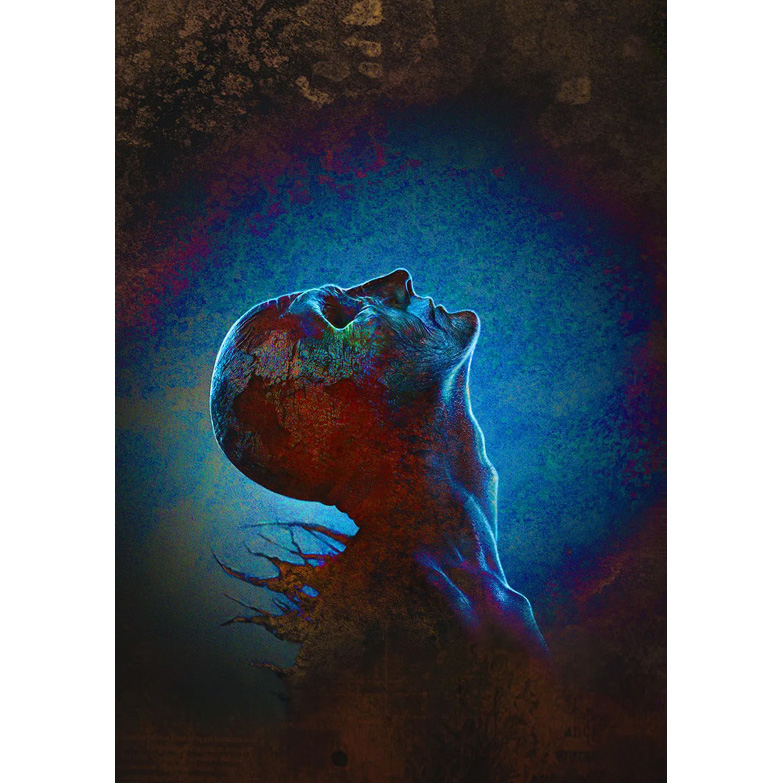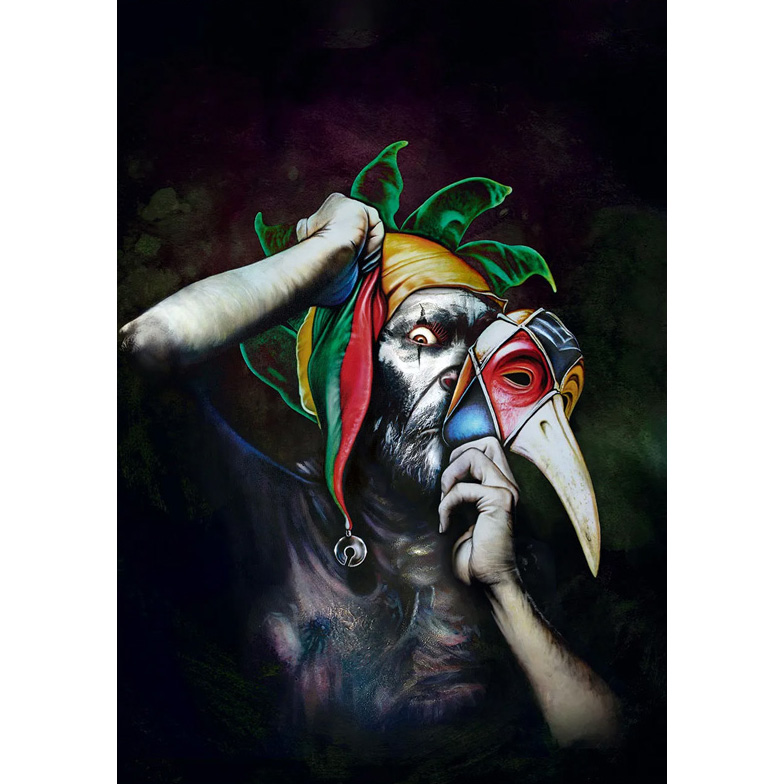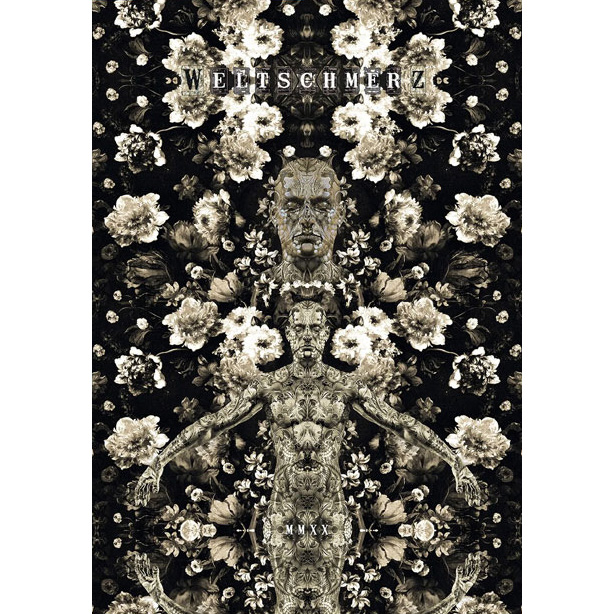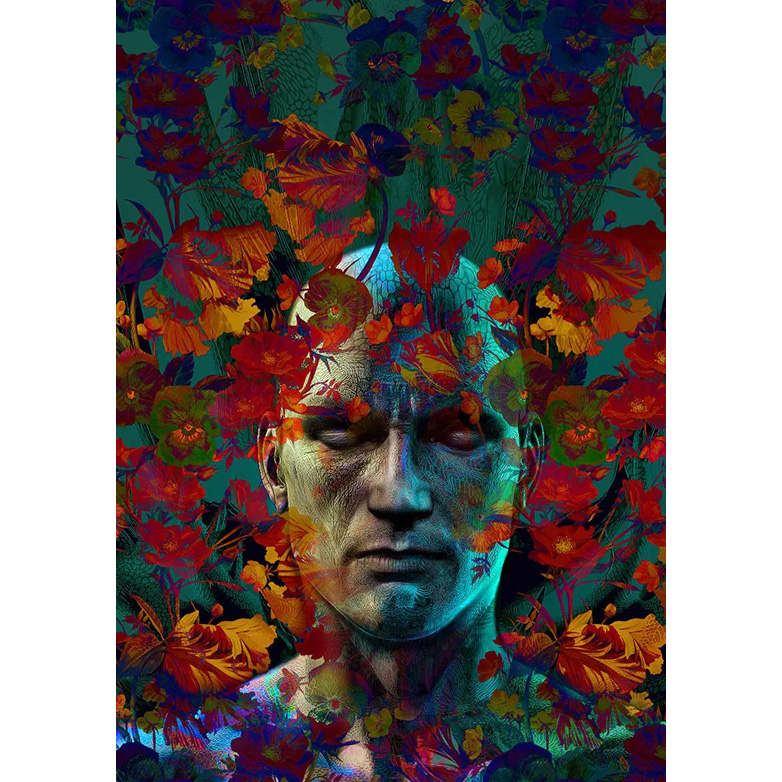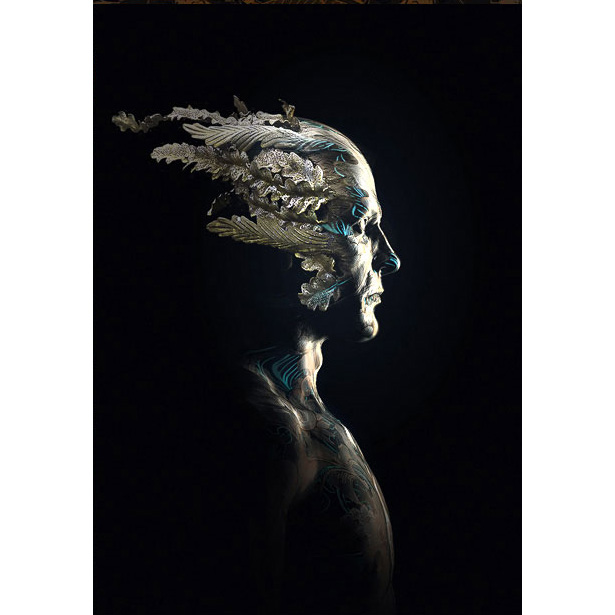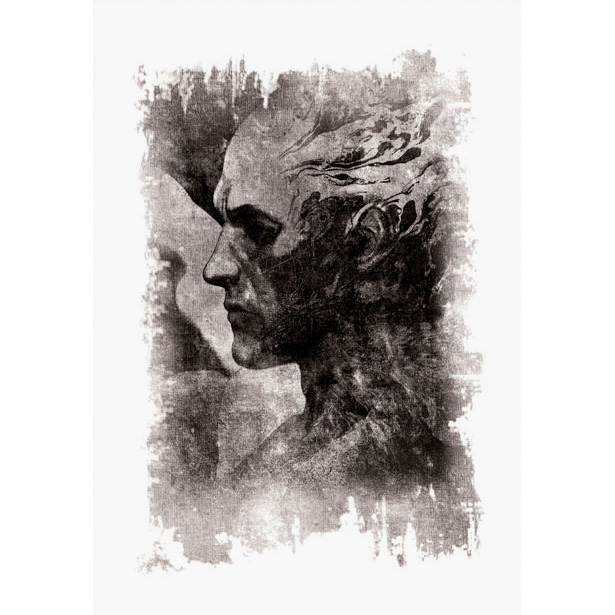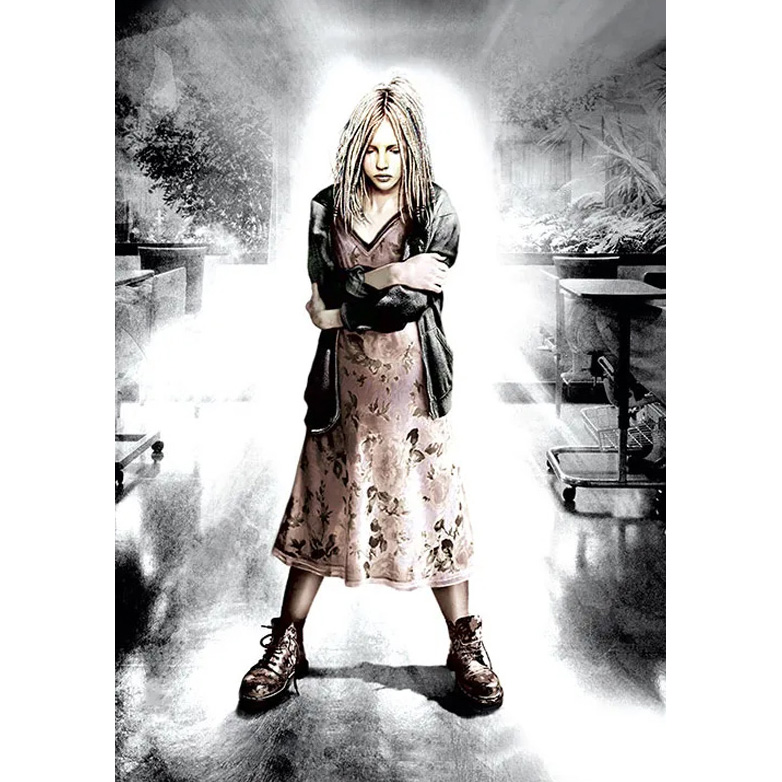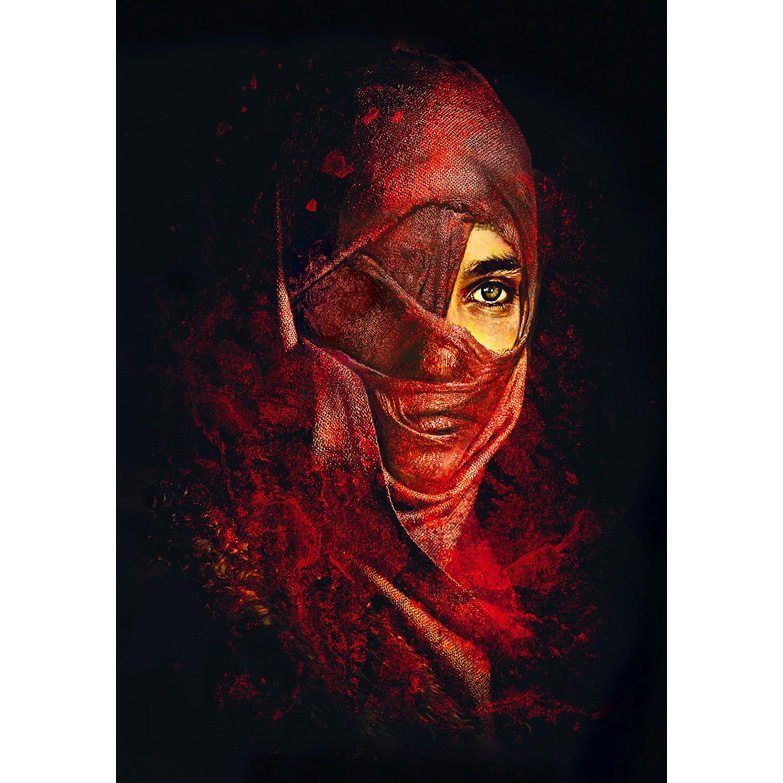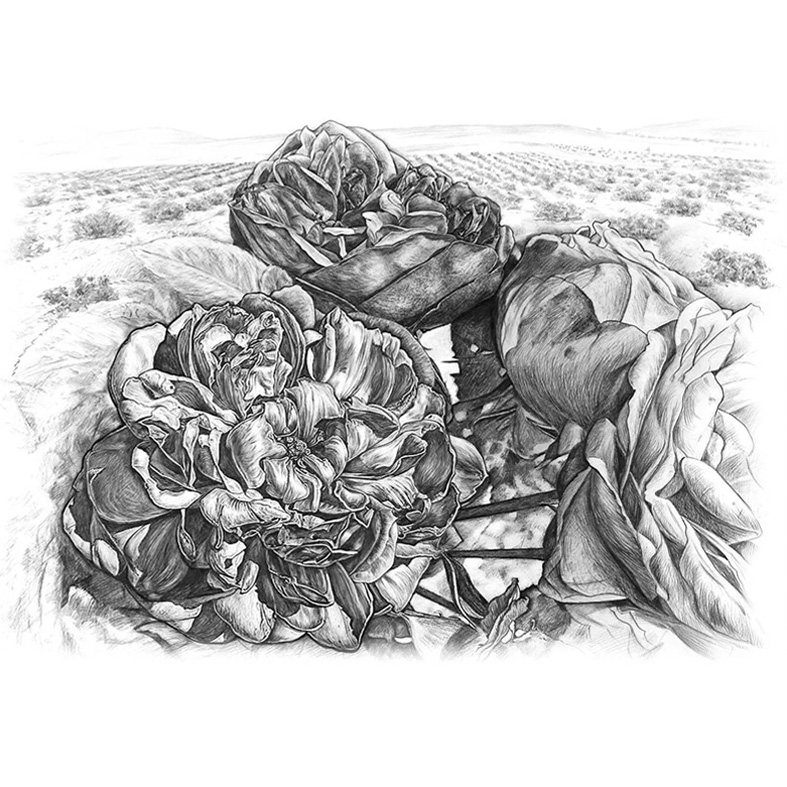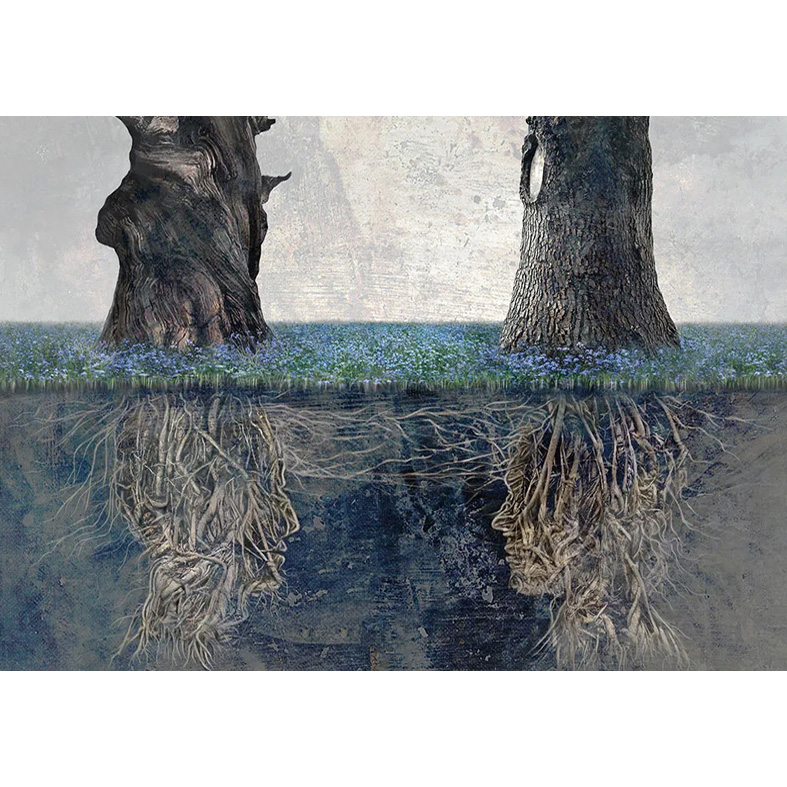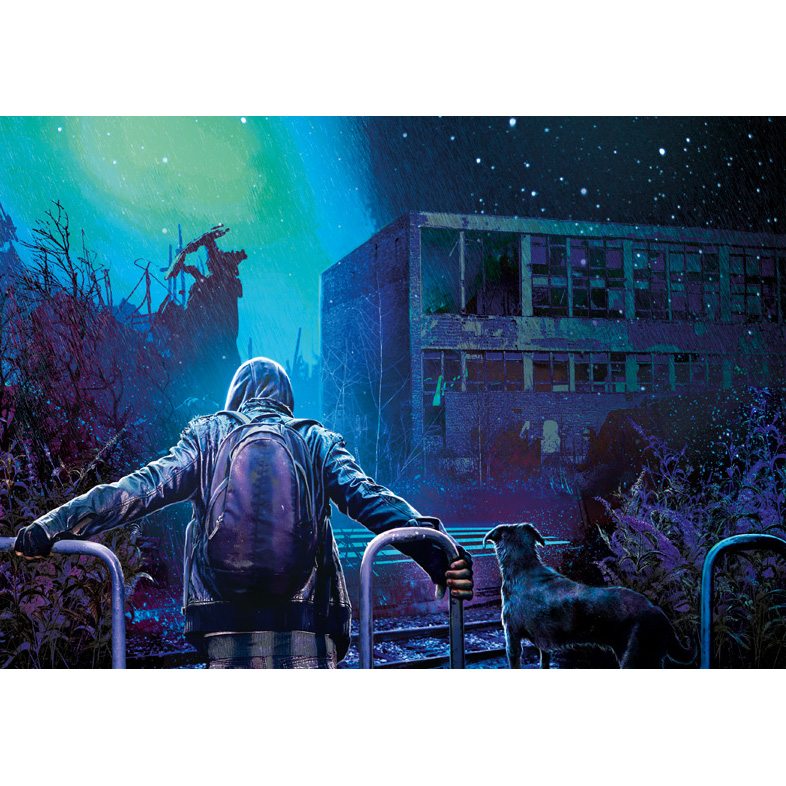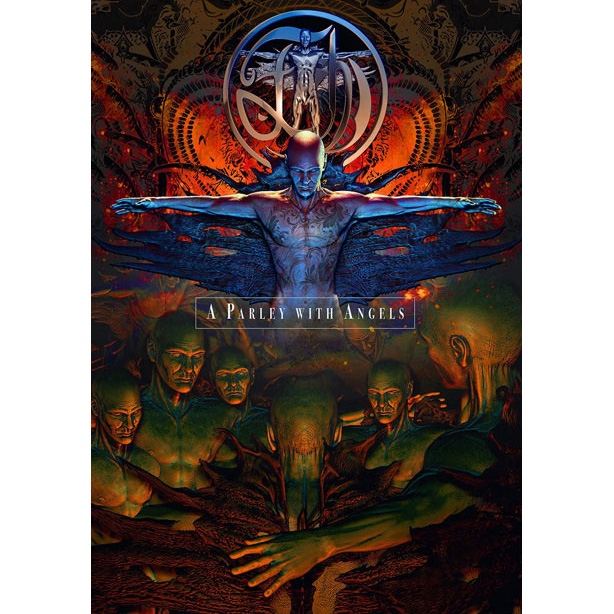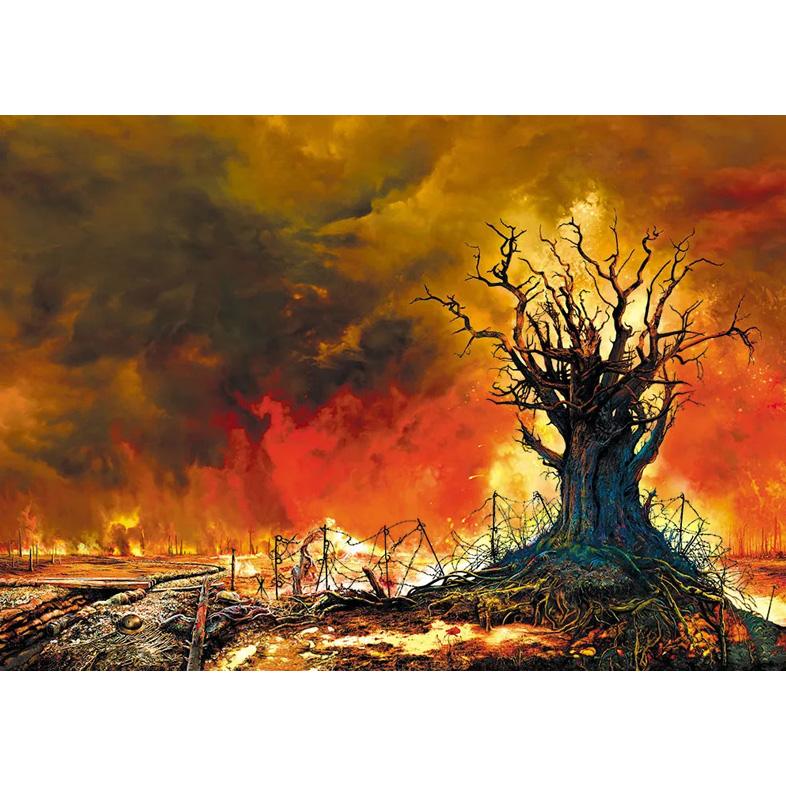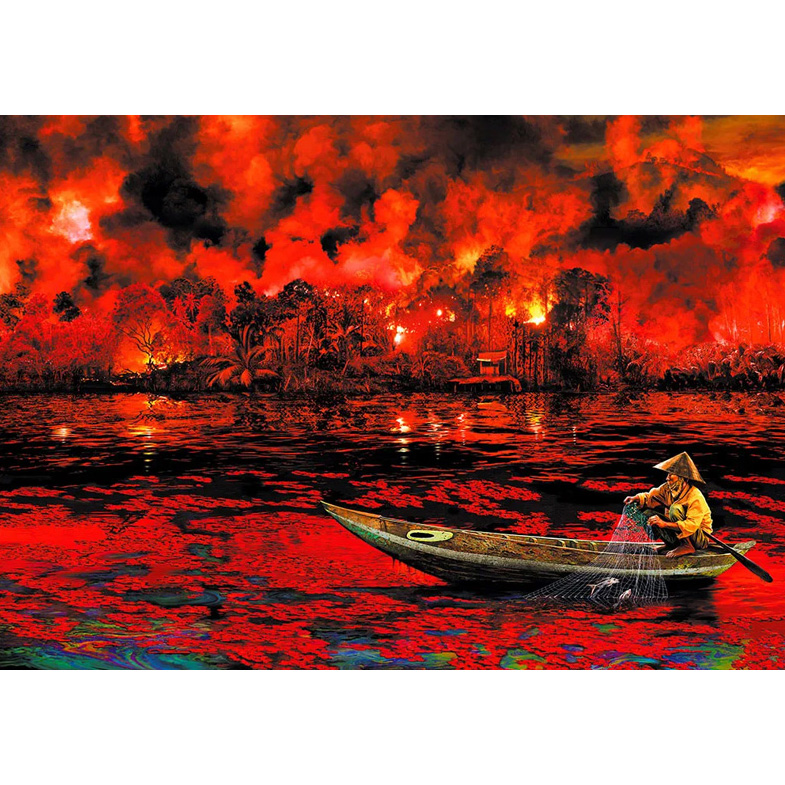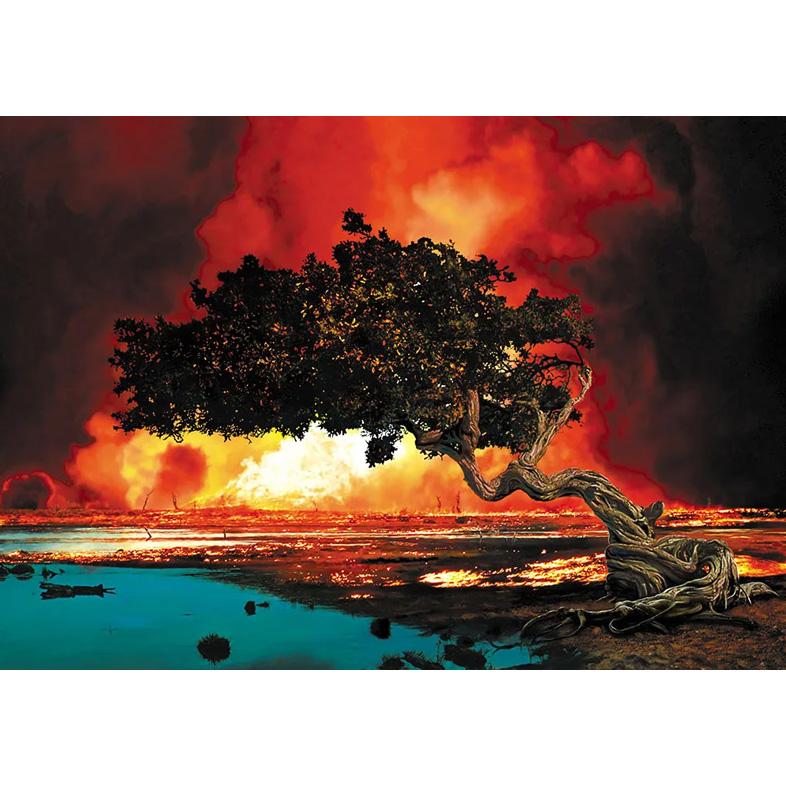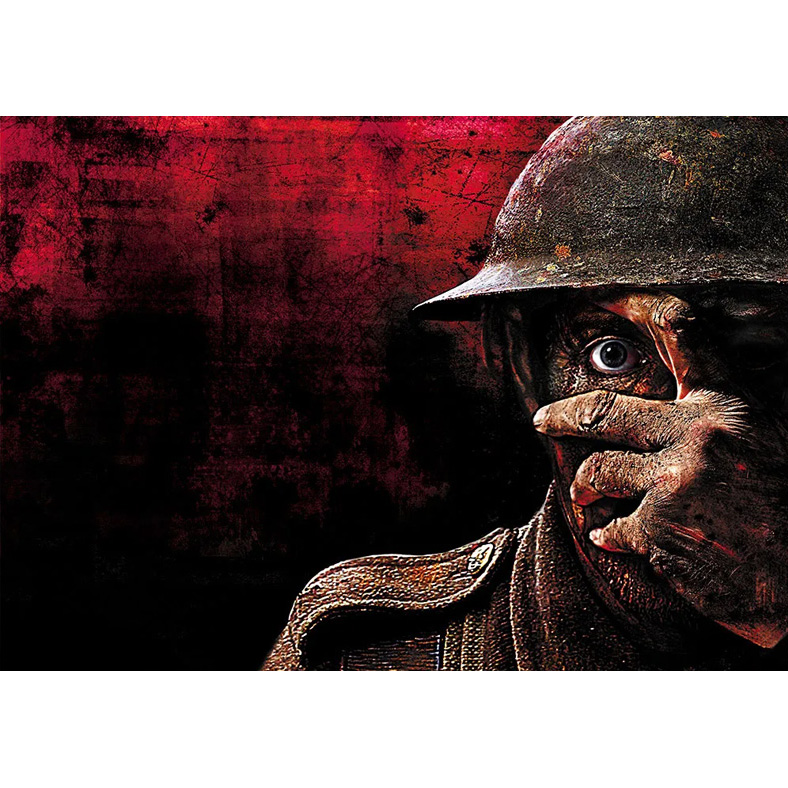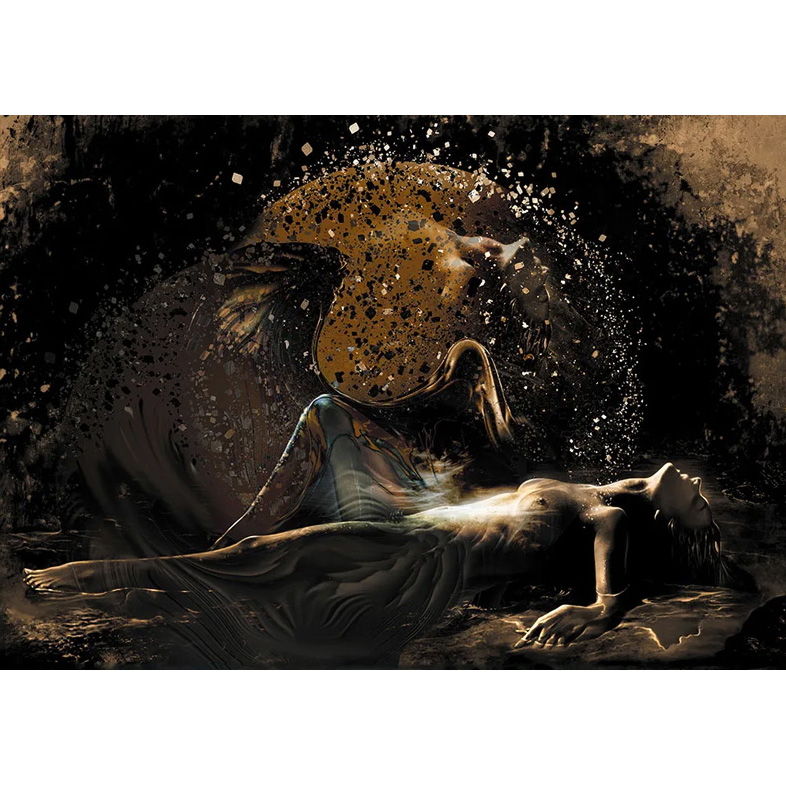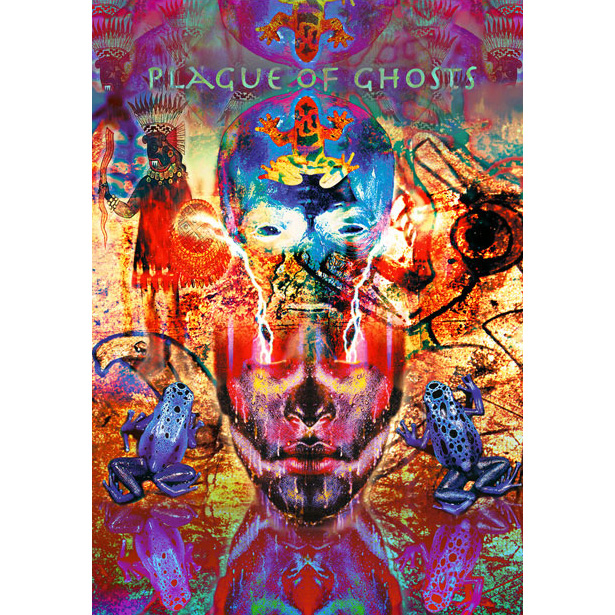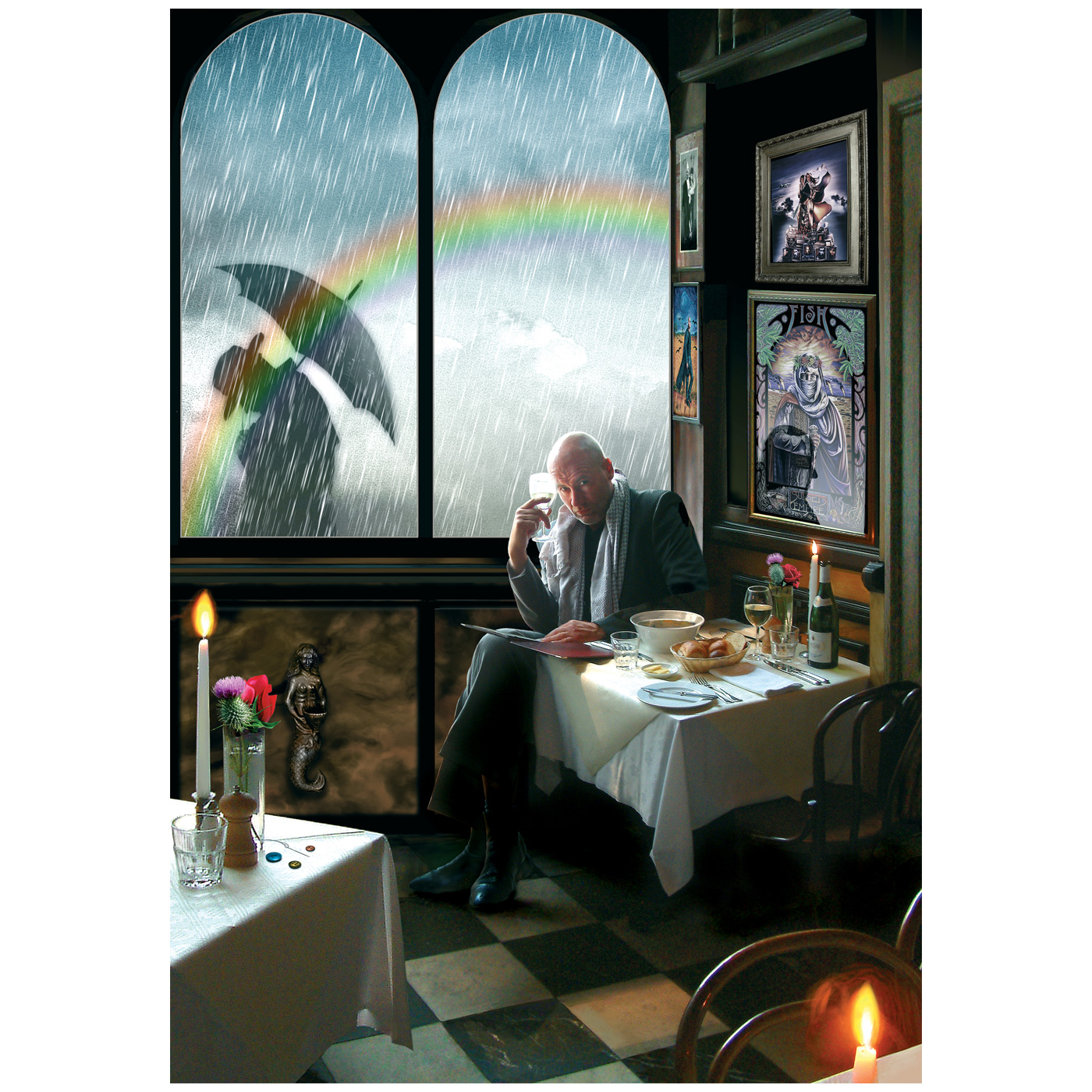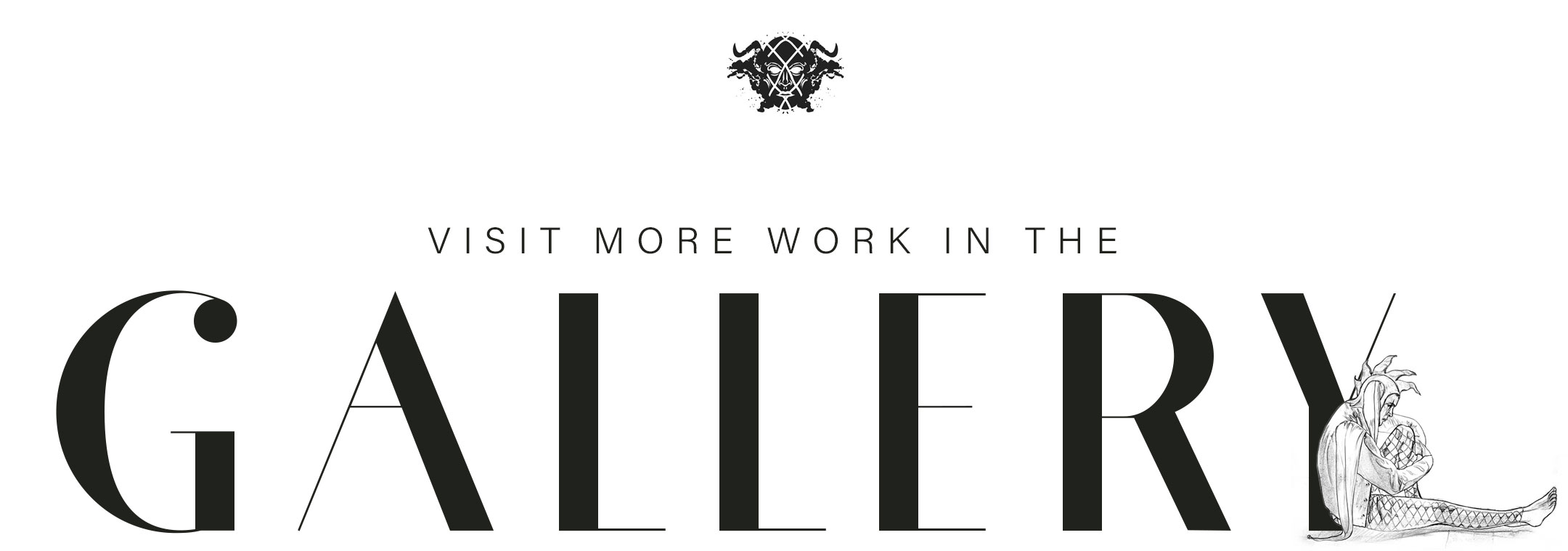30 YEARS OF FISH ART
All lyrical extracts © courtesy of Fish

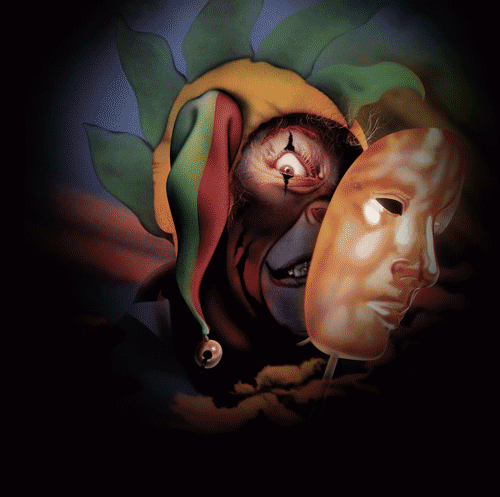
Fish Logo, 1990 // When Fish left Marillion, the first task was to design a logo. These are some variations over the past 30 years.

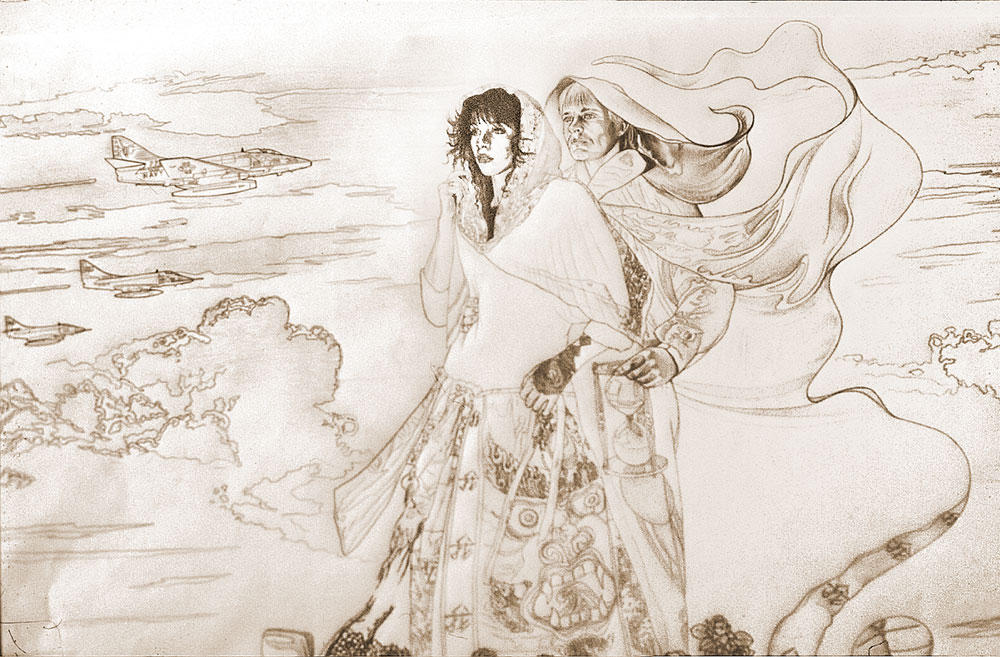
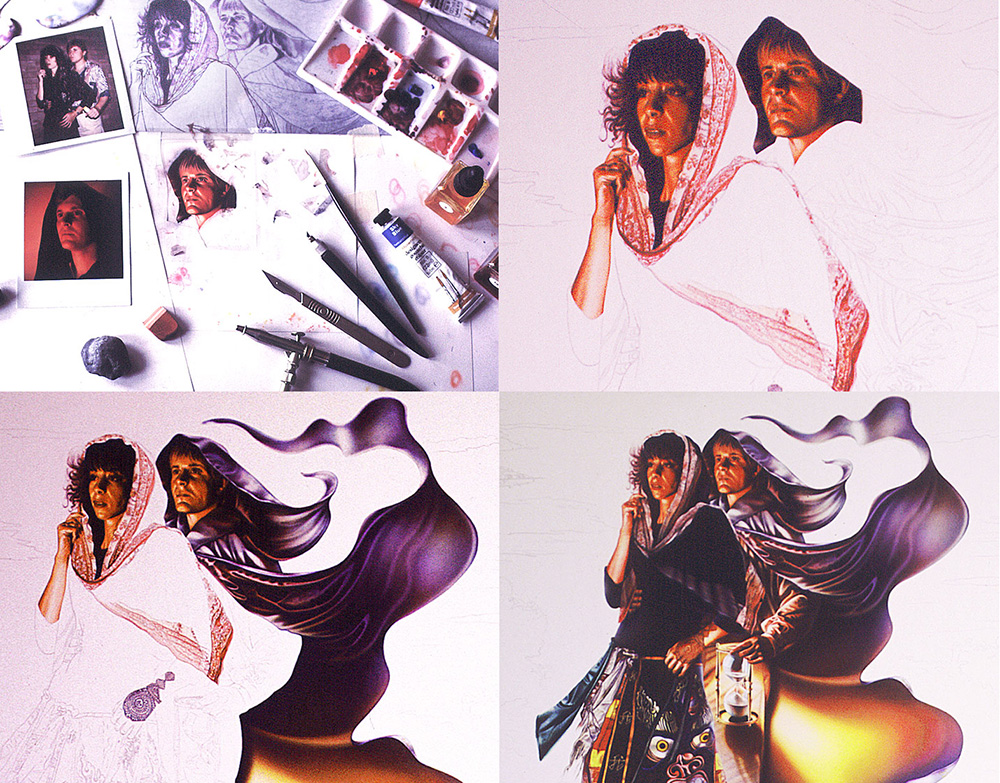
Vigil In A Wilderness Of Mirrors, 1990 // The first solo album from Fish had an airbrushed front cover and complex inside gatefold illustration that was a mix of paint with collage and photography. The ‘Wilderness of Mirrors’ was coined by the writer and poet, James Jesus Angleton. It refers to a labyrinth of counter-espionage, plots both real and imagined, each step taking you further into a bewildering world of intrigue. In the end, you felt no one could be trusted. There was a lot of anger around in the UK when this album was created. The whole spiritualism vs consumerism debate had really begun to take hold, as the young upwardly-mobile professional or ‘Yuppie’ was born. Climbing to the top of the ‘hill’ of consumer goods, where, at its peak, you could no longer see those at the bottom or the path you took to get there. A modern day Pilgrim’s Progress, where in Fish’s lyric his everyman ‘listens to the crowd’.
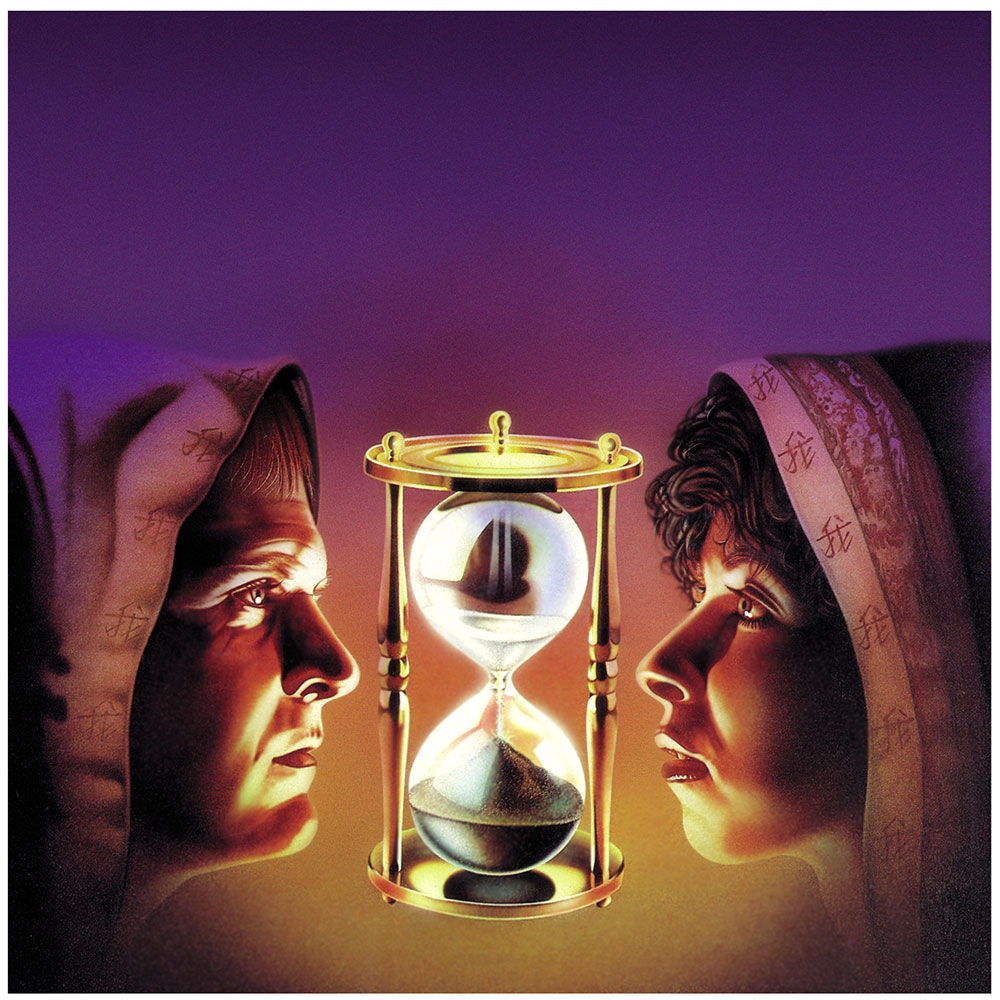
State of Mind, 1990 // The first solo single, using the hourglass symbol and young couple as seen on the hill of the Vigil album sleeve.
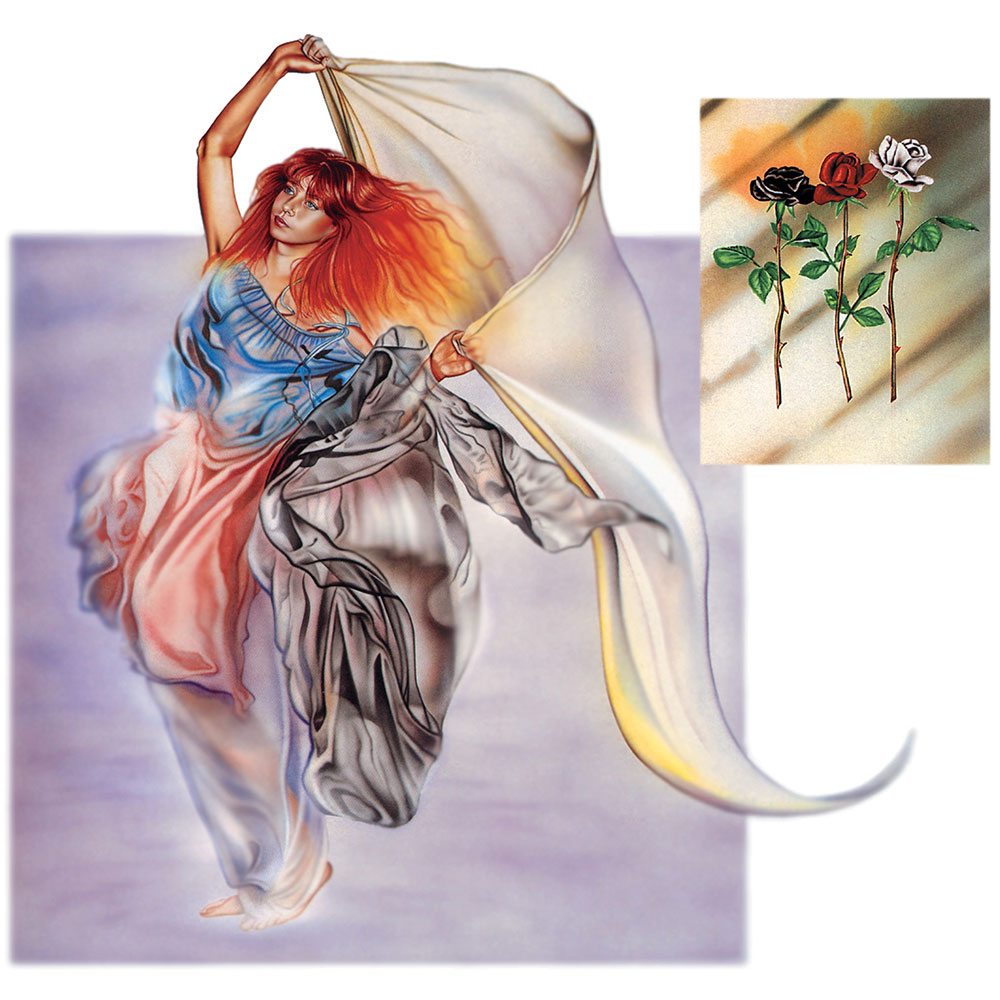
Gentleman’s Excuse Me, 1990 // A portrait in pastel shades.

Big Wedge, 1990 // The lyric here deals with the easy credit boom which had its roots in the USA and the greed it spawned. The actual shape of the illustration was a wedge shape with the dollars breaking through. As for that jet plane, it was not meant to be heading towards the twin towers, it simply illustrates the first line of the song: ‘I found a new religion yesterday; I’d just cleared immigration; JFK’ but many years later, the image still seems prescient.
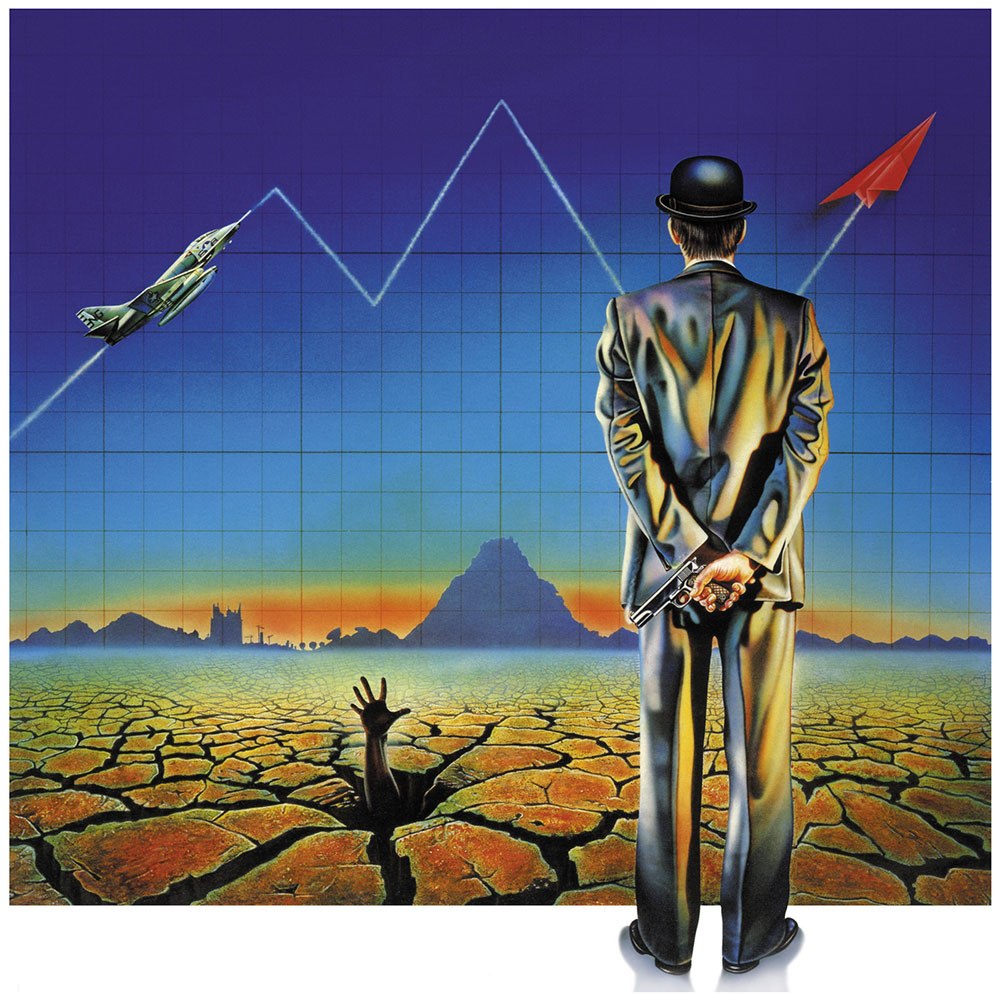
The Company, 1990 // This was intended as a traditional drinking song with Celtic influences. However Mark’s illustration for it continues the general theme of the Vigil album, here portraying a ‘businessman’ archetype who’ll stop at nothing to achieve his targets.
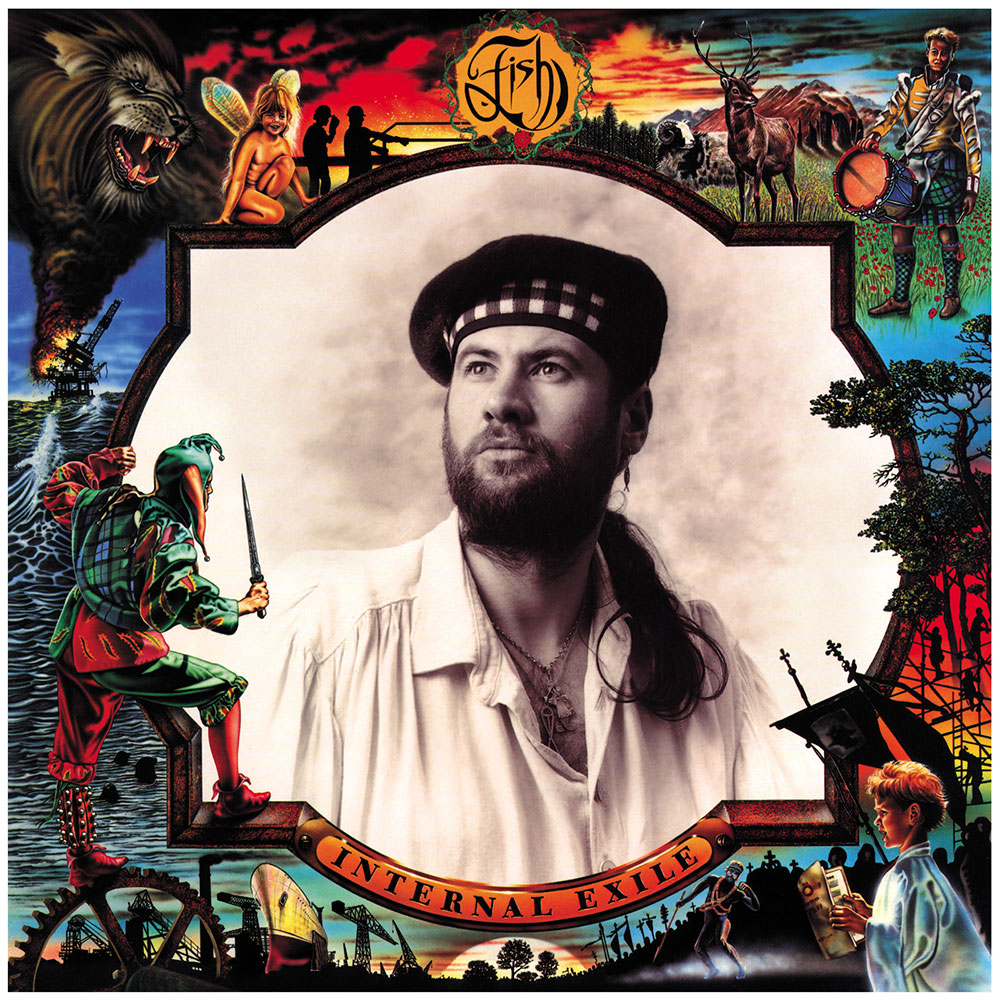
Internal Exile, 1991 // The idea here was to portray elements of Scotland as a ‘Boys Own’ series of lush illustrations that might have appeared in the colour plates inside the books of Robert Louis Stevenson. This border illustration framed a sepia-tinted photo of Fish, imagined as a character in a novel by Sir Walter Scott.
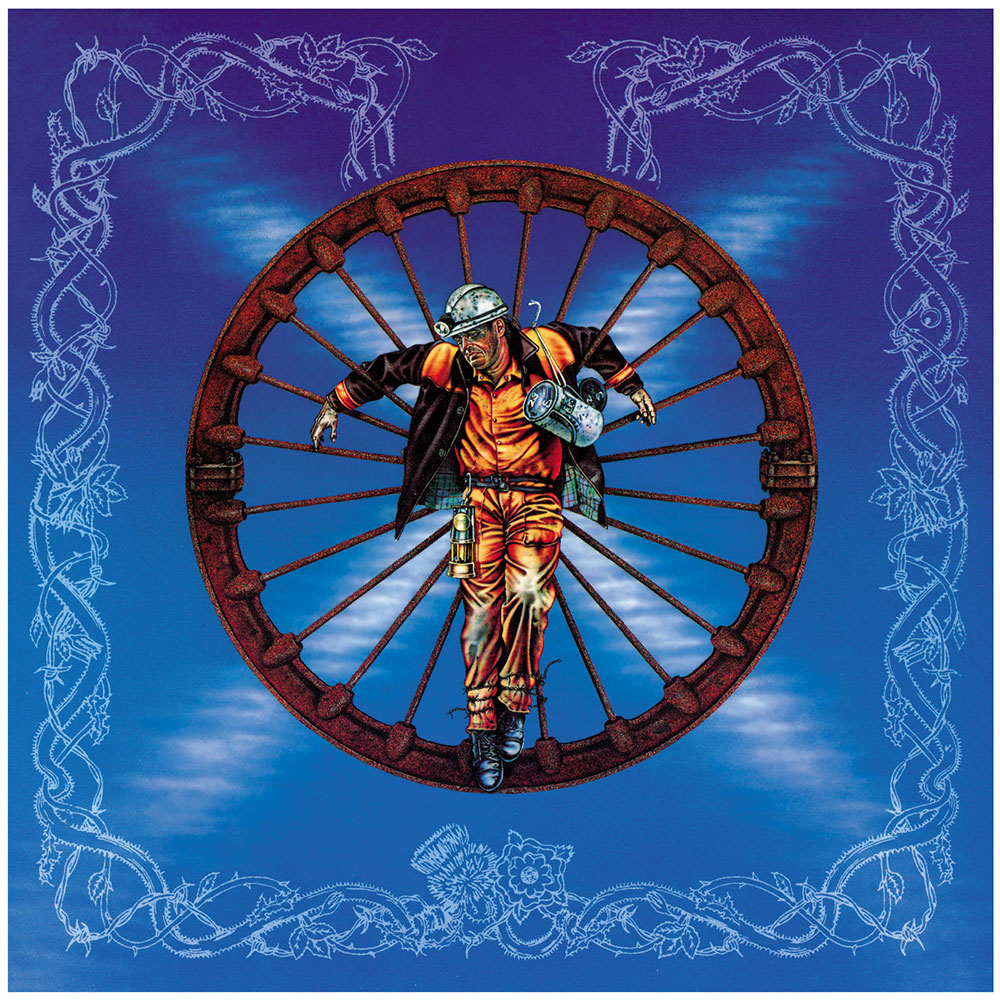
Internal Exile (single), 1991 // To illustrate the title track from the album which was released as a single, Mark painted a Scottish miner crucified on a pit wheel with the shape of the St. Andrew’s Cross in the clouds behind.
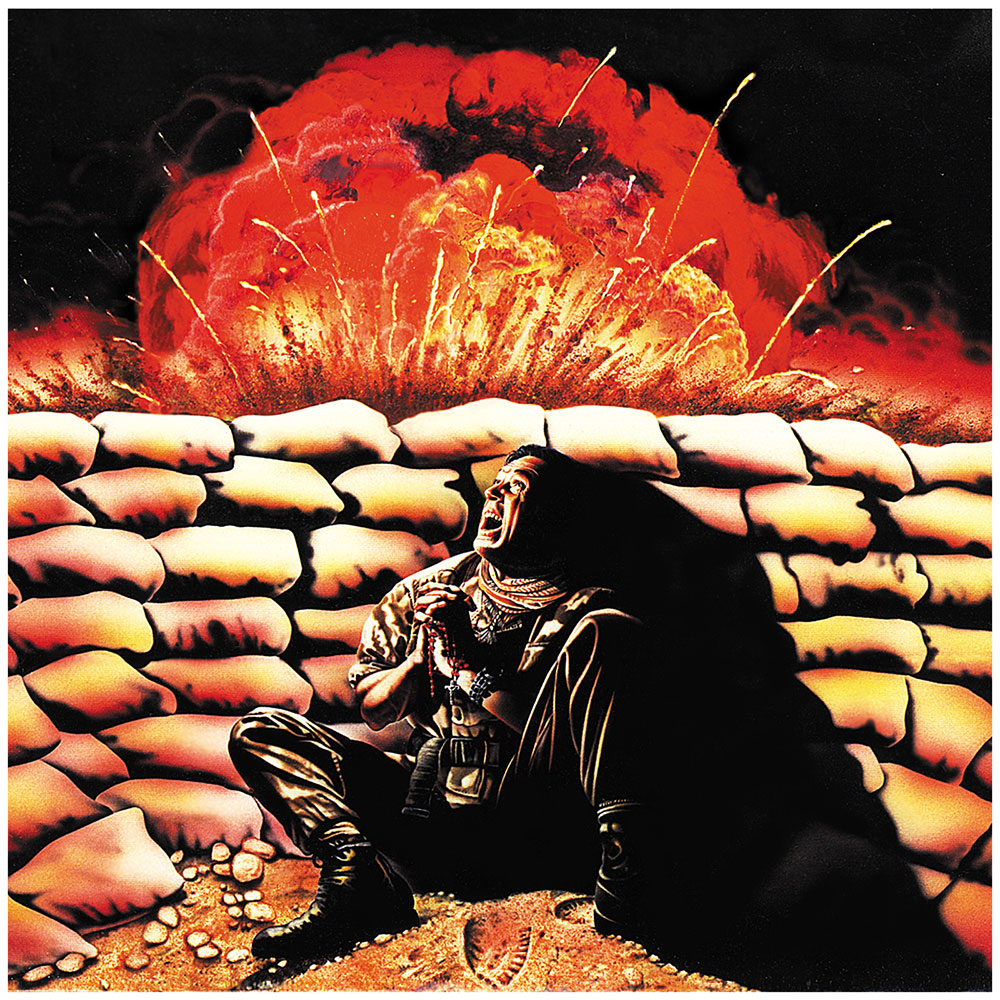
Credo, 1991 // The second single released from Internal Exile, was released soon after ‘Desert Storm’ and reflected concerns about TV war ‘voyeurism’.
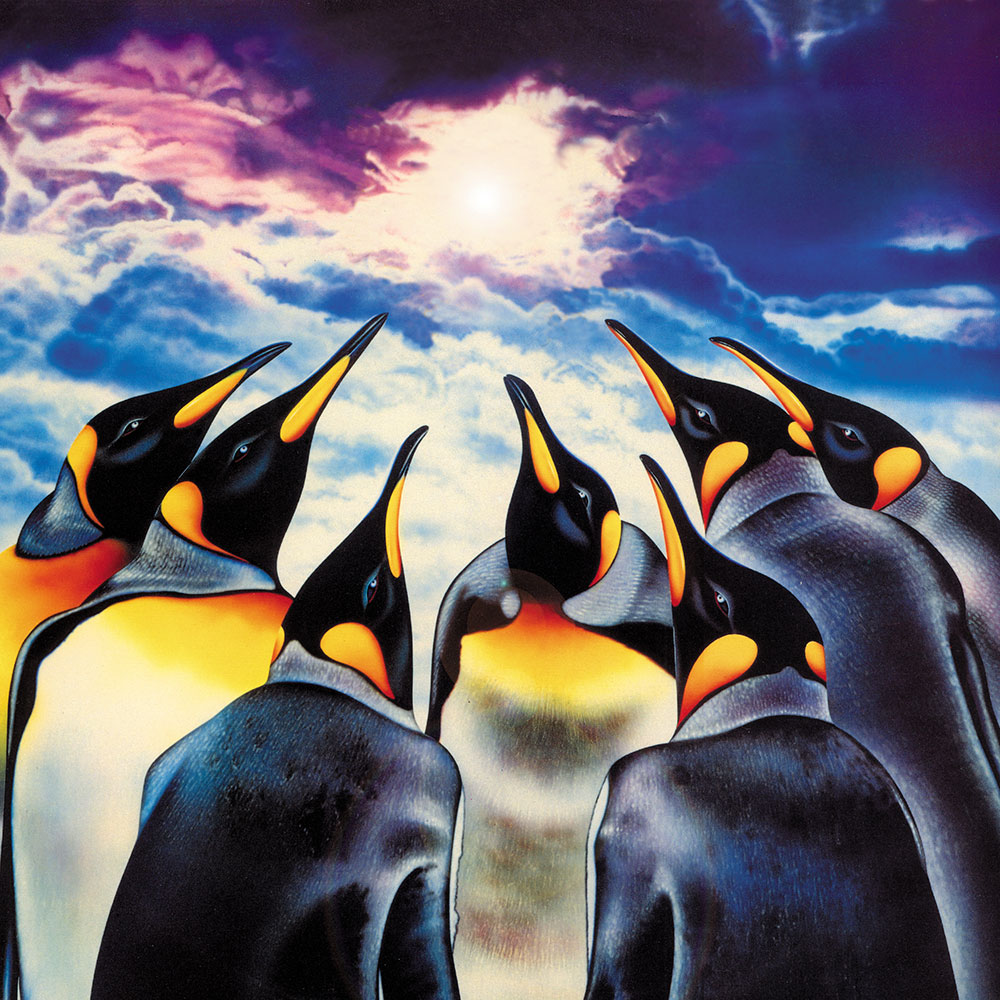
Something In The Air, 1991 // Originally a number one hit for Thunderclap Newman in 1969 and given a modern reworking by Fish, the art was inspired by a documentary in which penguins followed a torch light by their keeper when shone into their enclosure at the zoo!
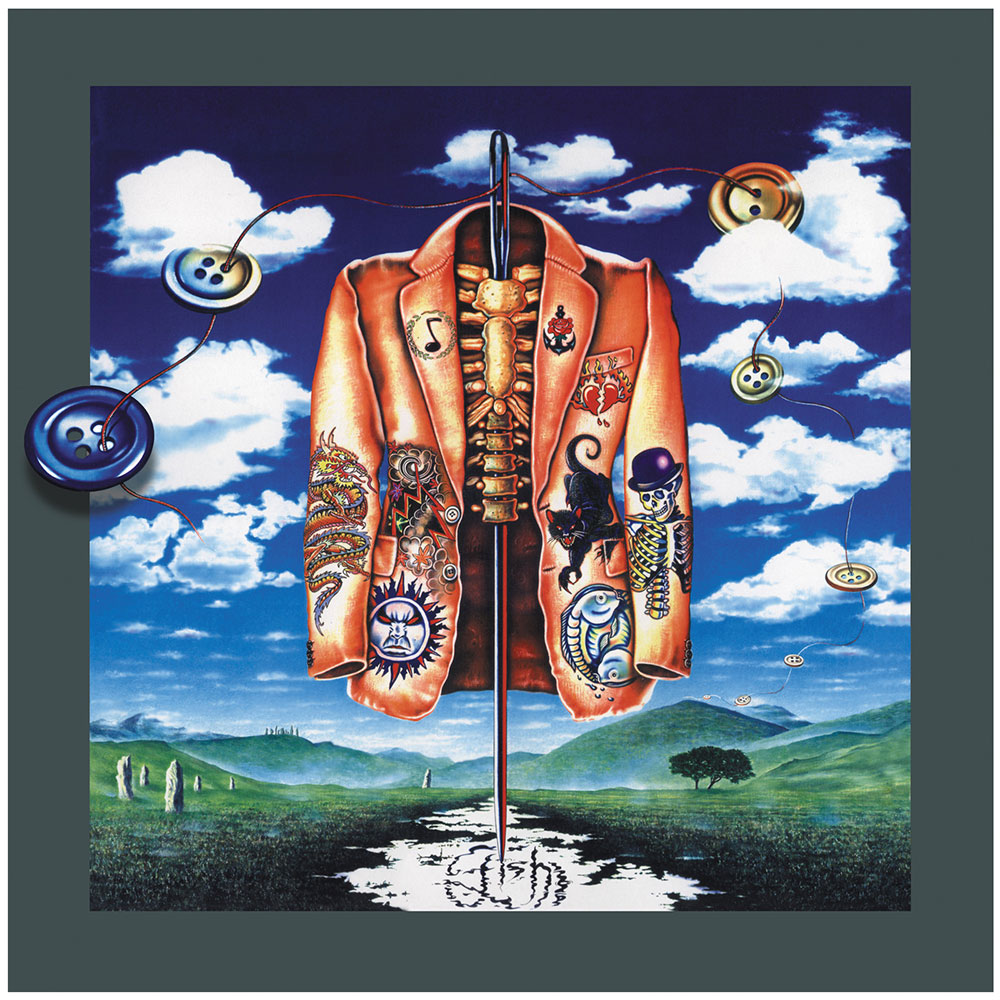
Suits, 1994 // The discovery of an enigmatic fossilized skull, unearthed near Lake Turkana, Kenya in the 1970s and nicknamed ‘Lucy’ or simply ‘Skull 1470’, prompted scientists looking for the ‘missing link’ to get excited. This surreal album cover can be seen as a thinly veiled attack on the corporate world. The standing stones symbolise spiritual loss. A skeletal torso, with a needle for a spine, threads buttons for a suit of tattooed skin. The scene is completed with the early dawn mist lingering over Scottish hills.
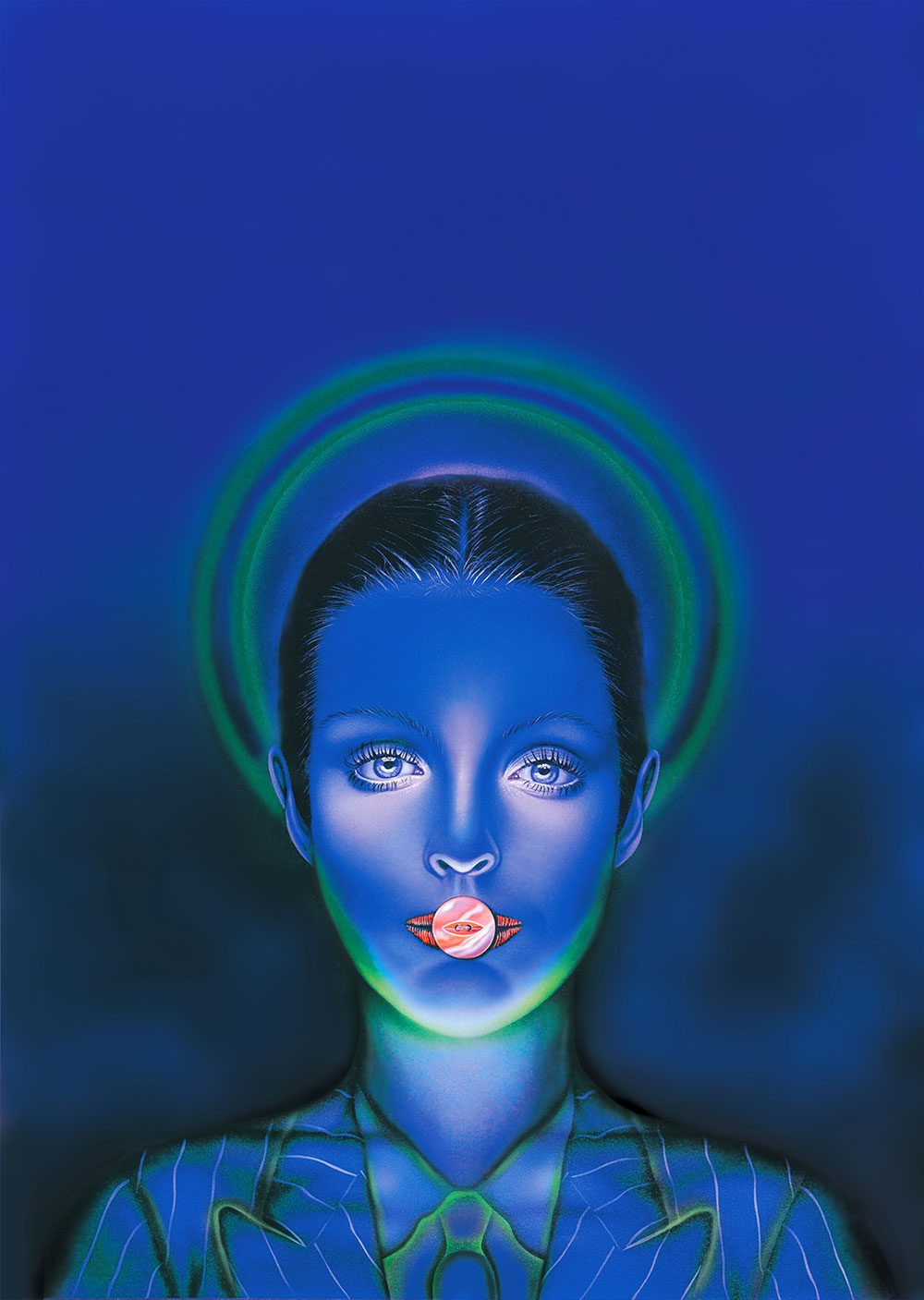
Lady Let It Lie, 1994 //
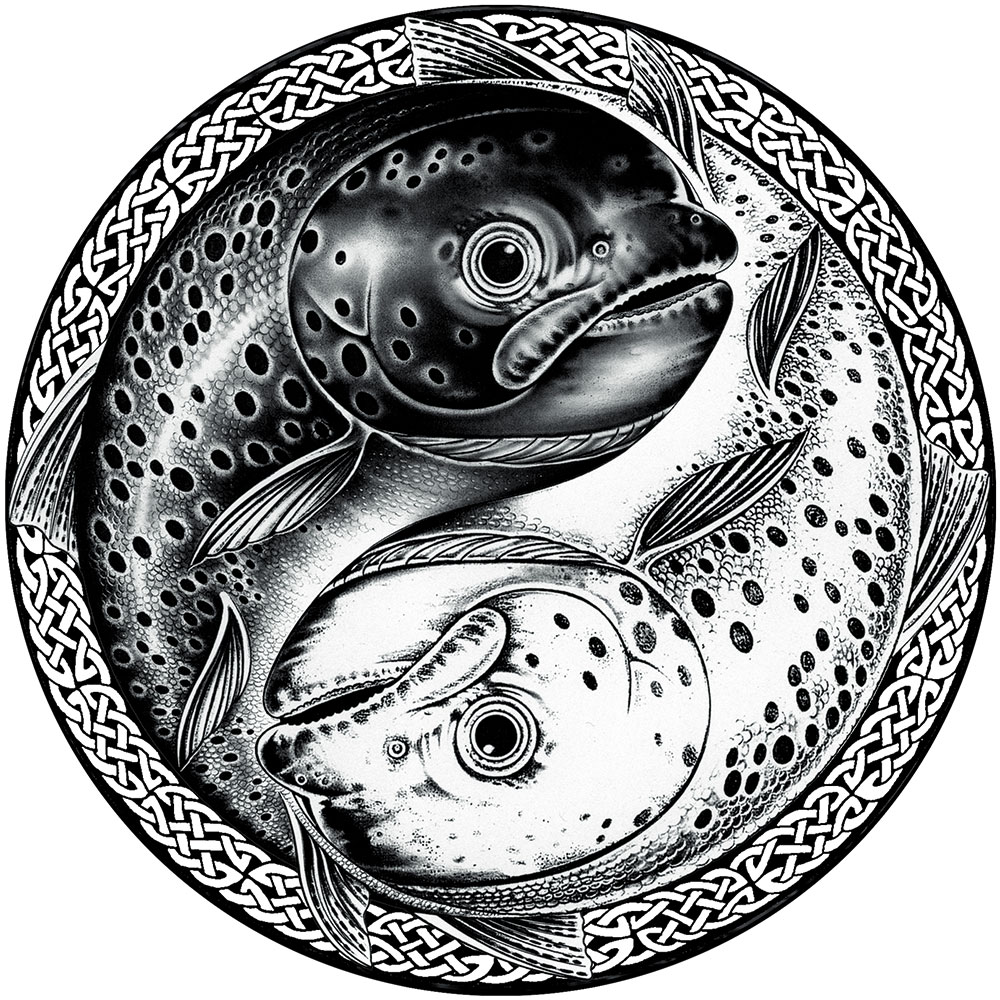
Yin Yang, 1995 // The first ‘Best of Fish’ album reflected the two contrasting sides of his recording career to date. ‘Yin’ being the darker, more complex material balanced out with ‘Yang’, which had more commercial songs with a lighter touch. The ‘Yin Yang’ symbol was created with two pencil drawings of a fish, one black and one white. Mark loosely based them on Brown Trout, native to the Lochs of Scotland.

Sunsets On Empire, 1997 // The title was a play on words to do with old ‘Empire’ movie theatres, as much as Queen and Country. Fish asked for an Art Deco design for an imagined poster, in the style of Lawrence of Arabia.
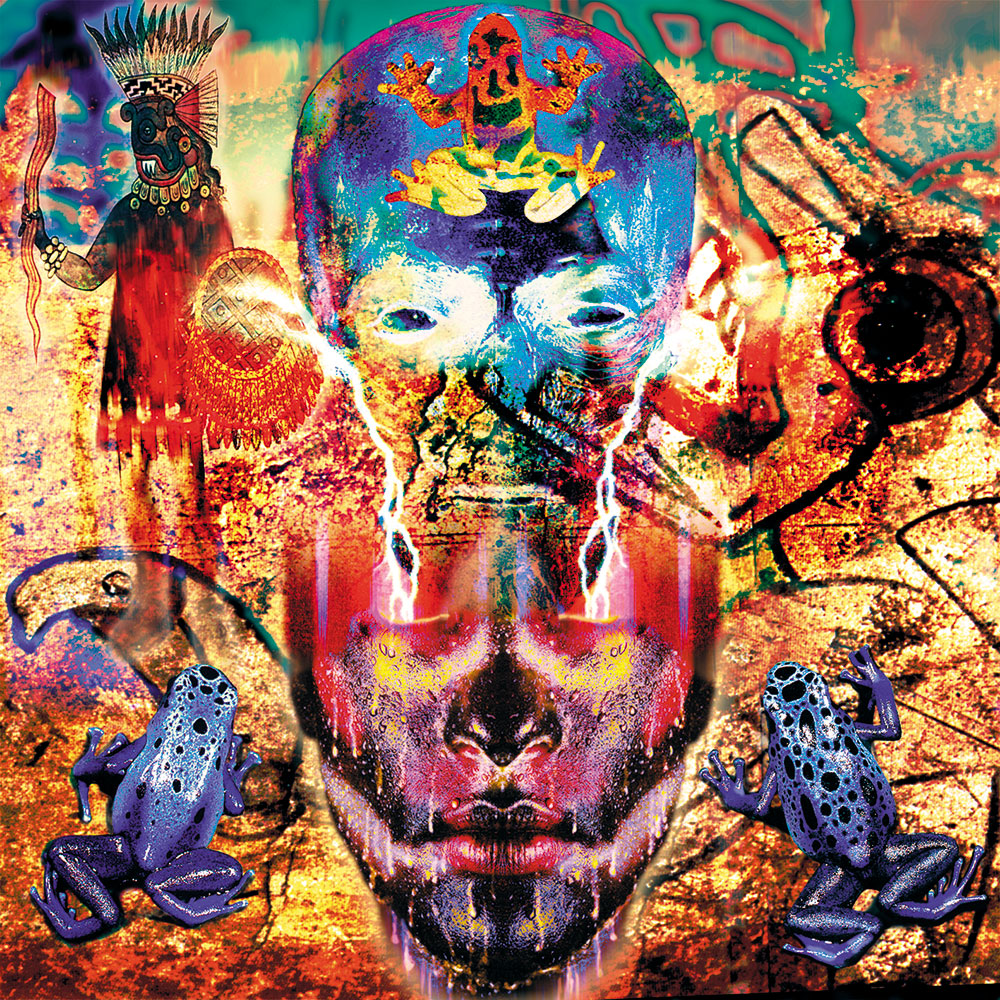
Plague of Ghosts, 1999 // A stunning twenty five minute song cycle that was really the heart and soul of Fish’s next album, Raingods With Zippos. It embraced all kinds of music from Rock, to Ambient Trip Hop, mixed in with Drum ‘n’ Bass and World Music; a startling gumbo of styles punctuated with spoken word. The Mayan raingod, Tláloc unleashes an untamed animus spirit, with voodoo and supernatural forces. Highly poisonous tree frogs were thrown in for good measure! In the heat of the jungle, with driving tropical rain and the sound of distant hypnotic drumbeats, the atmosphere is fully charged. This image marked Mark’s first foray into digital art.
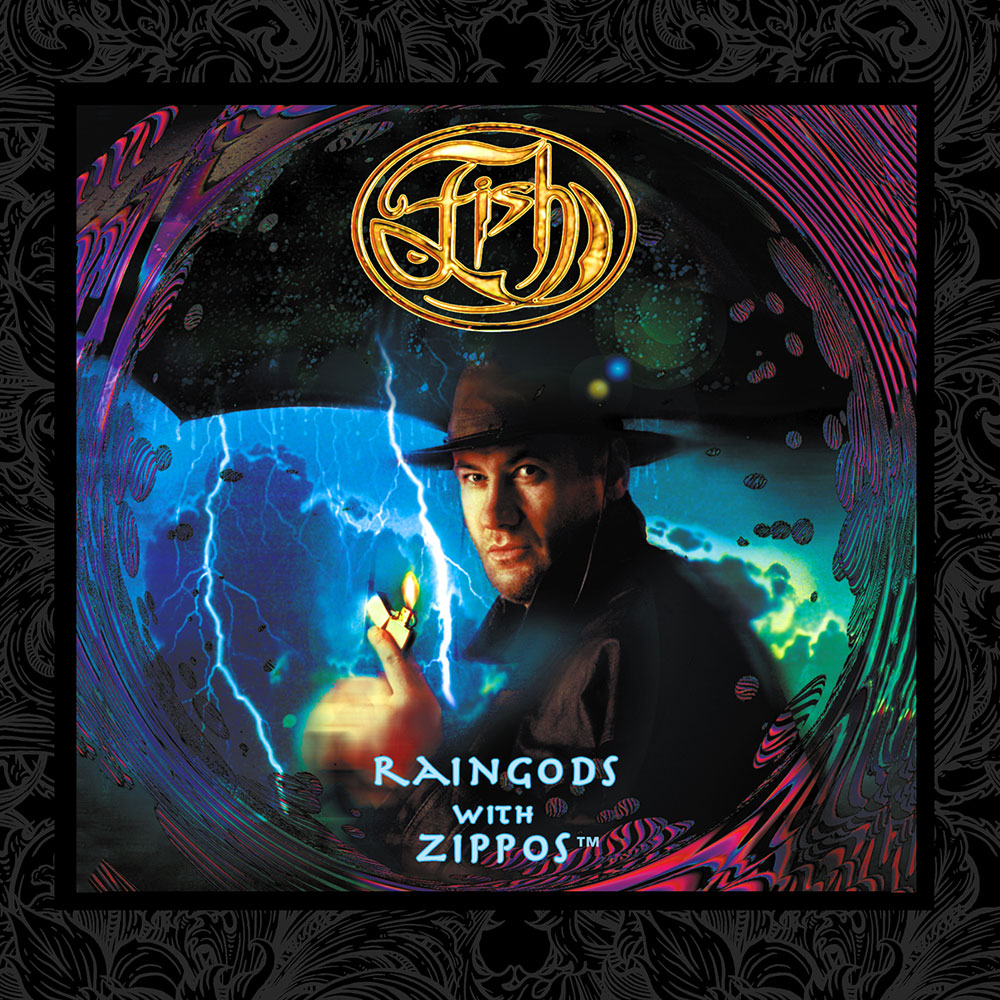
Raingods With Zippos, 1999 // Photography and digital art, a psychedelic swirl around a thunderstorm, sets the tone for one of Fish’s most experimental albums.
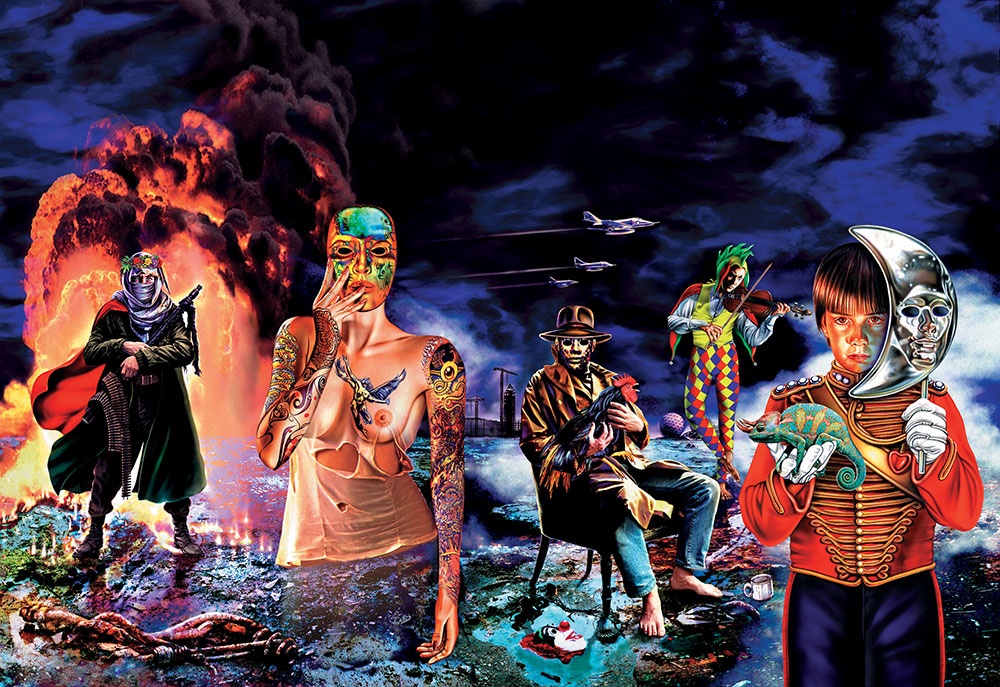
Masque, 2000 // The cover art for the book where Fish and Mark discuss all the stories behind the album covers of both Marillion and his solo years up to then.
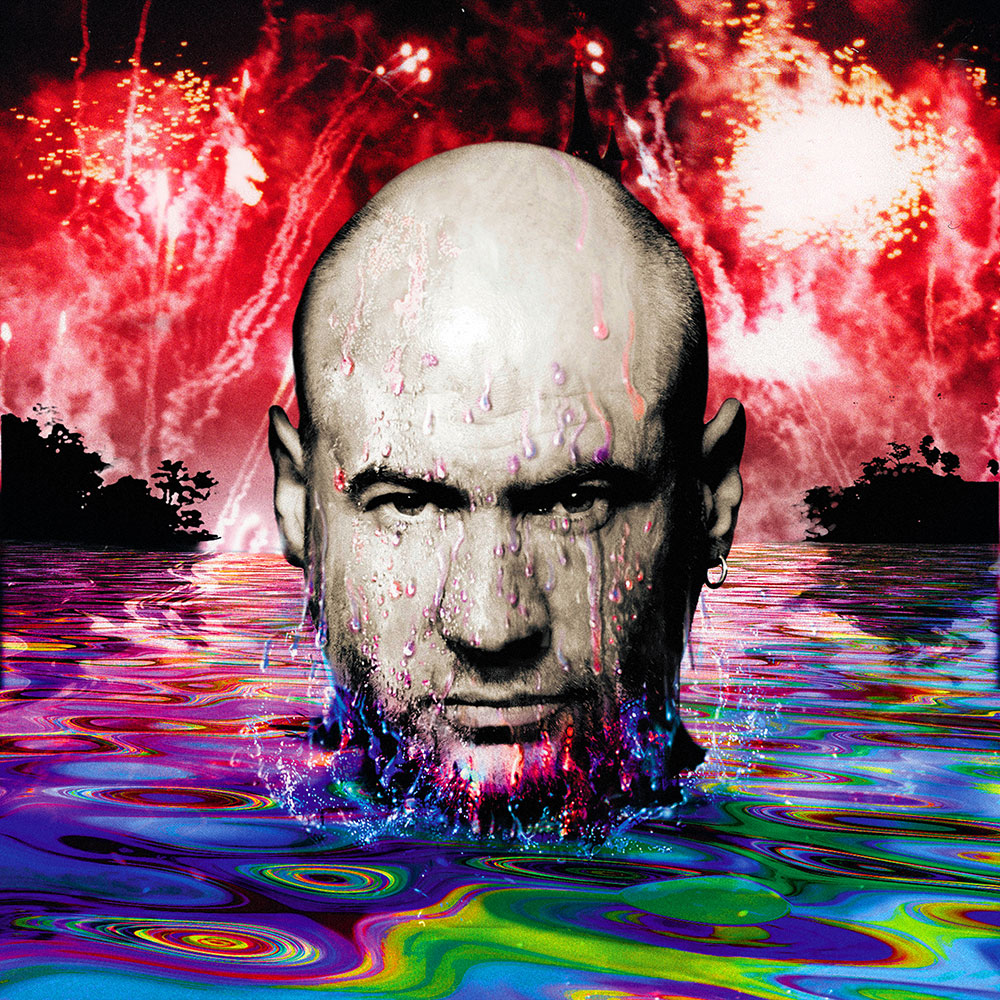
Fellini Days, 2001 // Fish and Mark revisited the film Apocalypse Now for some inspiration – the assassination scene where Captain Willard emerges from the river. A Fellini moment as described to Mark by Fish, is a surreal fragment of life where time stands still and occurs for no reason; a happening that you cannot adequately explain by rational thought. Perhaps coincidence, occasionally déjà vu, but whatever those moments are, they provoke a sense of wonder at the world.
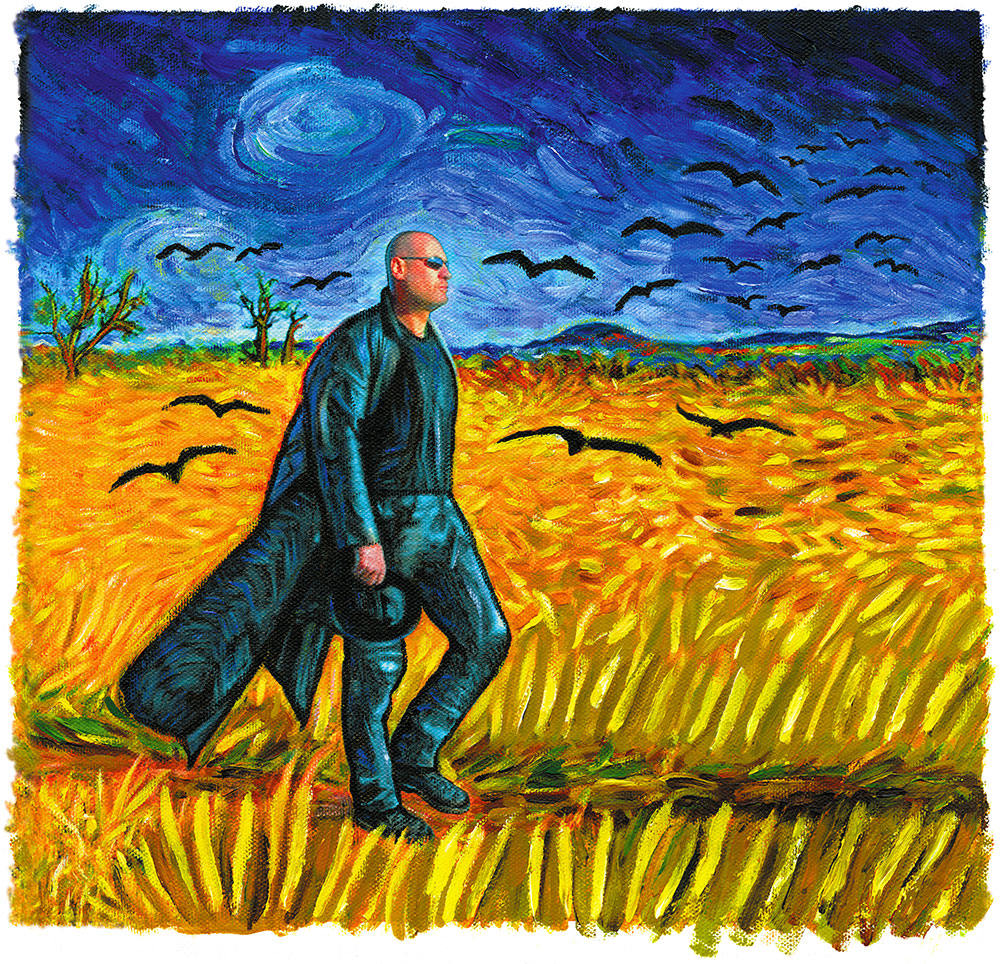
Field of Crows, 2004 // Fish asked if Mark could ‘be inspired’ by Van Gogh’s most famous painting for the cover art of Field of Crows. He suggested setting the scene, with him walking through a cornfield behind his house in East Lothian, Scotland, with the view of local landmark Traprain Hill in the background. Using his fingers, he smeared the paint on for the corn field having masked off the area where he airbrushed Fish’s face.
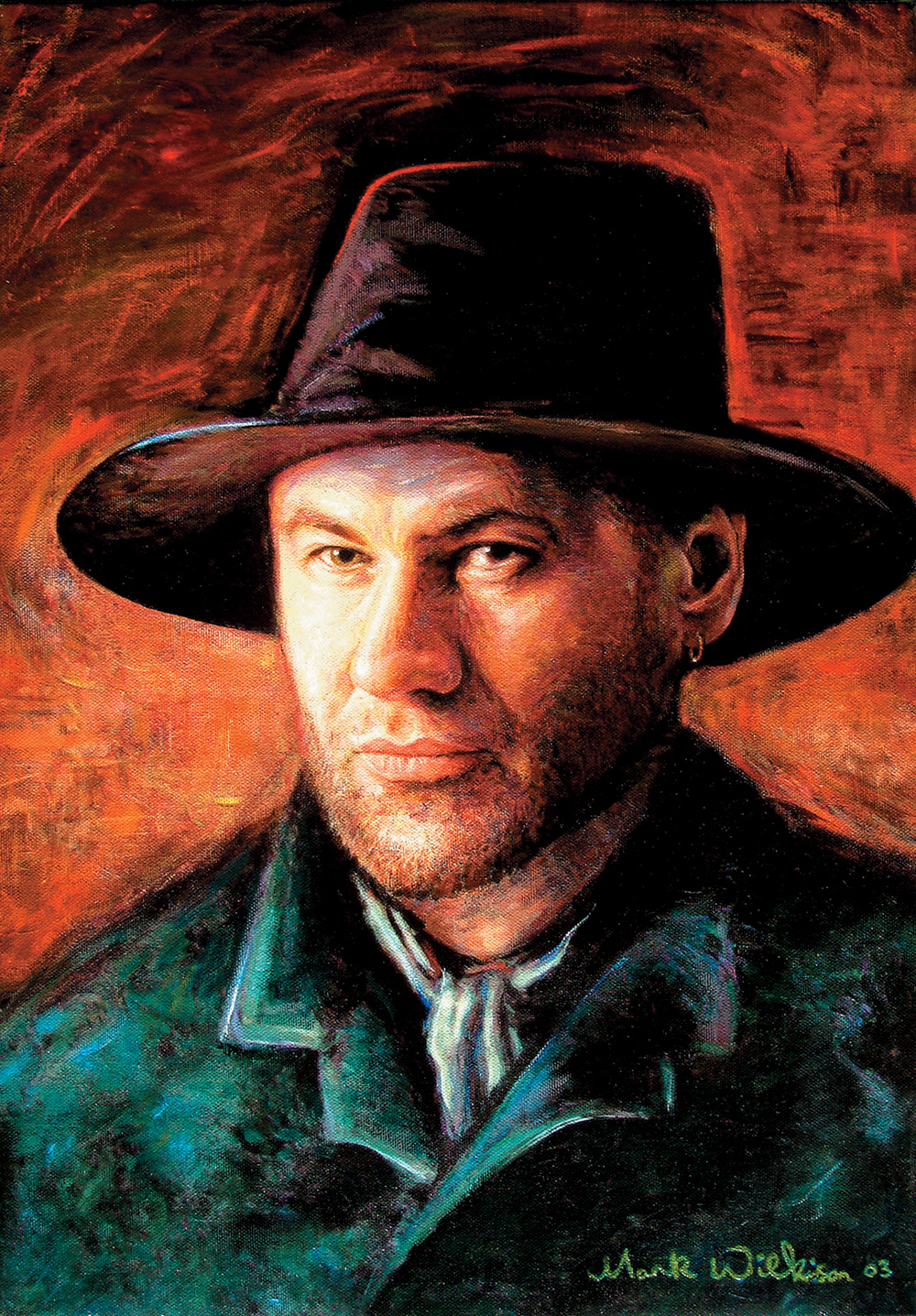
Portrait of Fish, 2003 // Inspired by Van Gogh’s ‘Self-Portrait with Felt Hat.’ Acrylic paint on canvas.
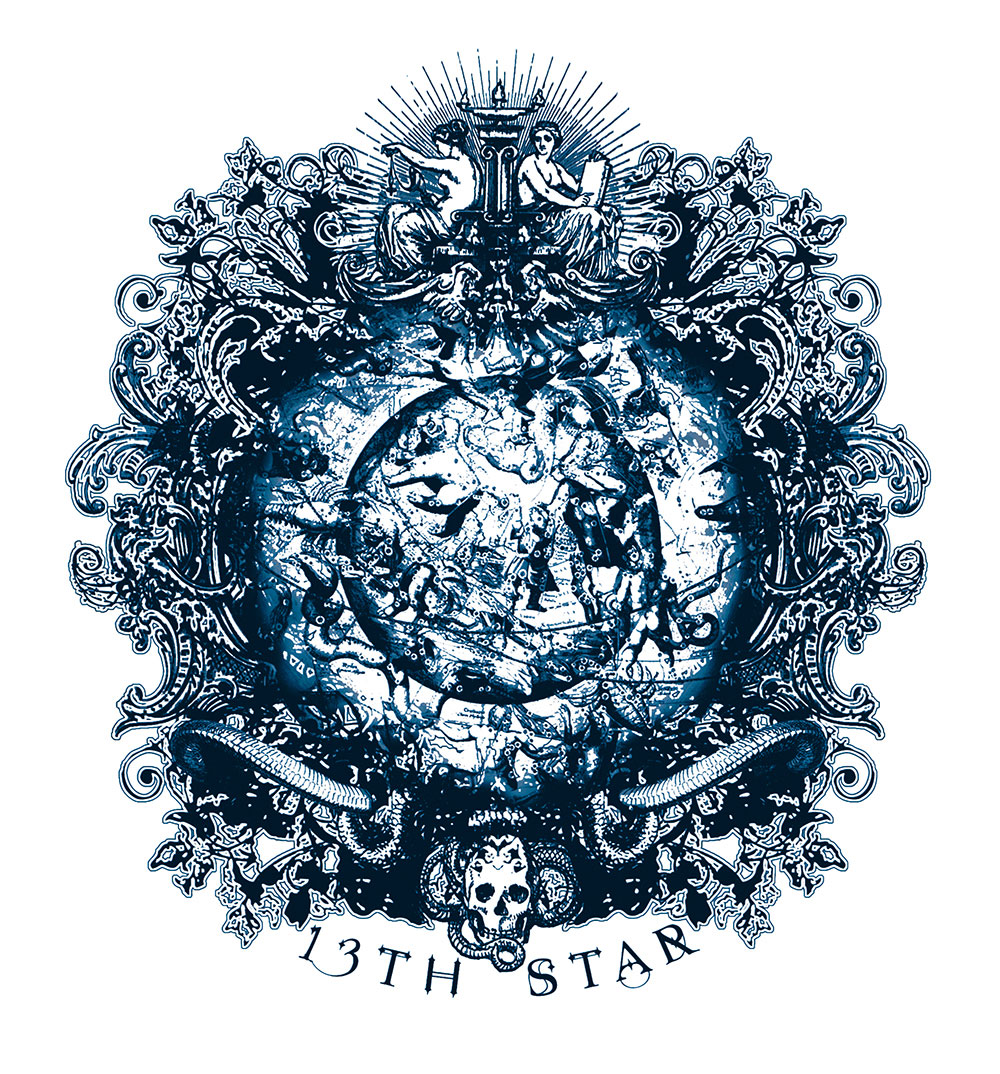
13th Star, 2007 // Mark based this illustration on Ophiuchus, the often overlooked 13th sign of the Zodiac, sometimes known as Serpentarius, the Serpent Holder. It was used on tour T-shirts and as a tattoo design for the figure shown in the Dark Star illustration.
13th Star, 2007 // A dark angel setting sail under cover of darkness. To quote the lyric of the song Openwater, she was; ‘in search of new horizons, where the sky melts in the sea’. Fish was inspired by a holiday to Egypt where he visited a temple decorated with golden stars on a blue ceiling. The star featured on the special edition slipcase packaging of the album, appeared again on the sail of the boat here.
Dark Star, 2007 // This depicts a gothic scene high above the shoreline. The sea, which is at first calm and moonlit with shooting stars and distant galaxies, suddenly becomes a raging torrent under heavy winds and stormy skies. Crashing waves encircle the angel as she sails into unknown waters in the far distance. The man watches helplessly as a monstrous sea serpent rises up above the water and heads towards the angel. Her fate it would seem, in the stars!
A Feast Of Consequences, 2014 // Mark suggested a hundred page special edition book format to do this project justice as it would give him more scope than a usual album cover and CD booklet. Ideas flowed back and forth between him and Fish. When The Highwood Suite was starting to take shape, the songs stretched over half the album so Mark decided to ask WW1 expert Simon Moston to take him and Julie Wilkinson (who would contribute many drawings for the book) to The Somme for a full battlefield tour. They were especially interested to see High Wood. Mark was inspired after seeing a tree with a rusting WW1 grenade embedded into its bark. How had the tree survived? He imagined its roots going deep into the earth to avoid the heat of war above ground. The book won the prestigious Storm Thorgersen Grand Design award that year.

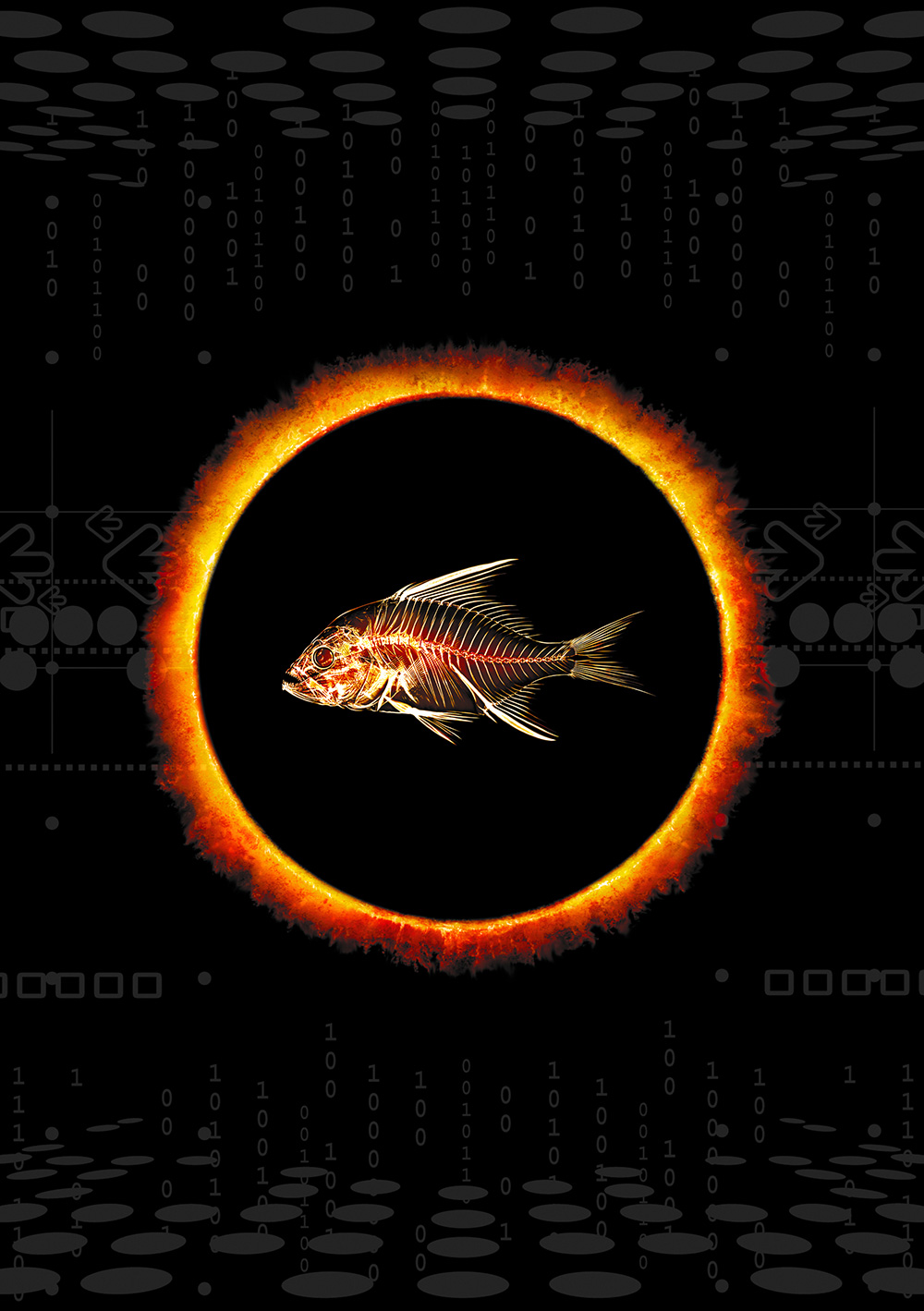
A Feast Of Consequences book cover, 2014 //
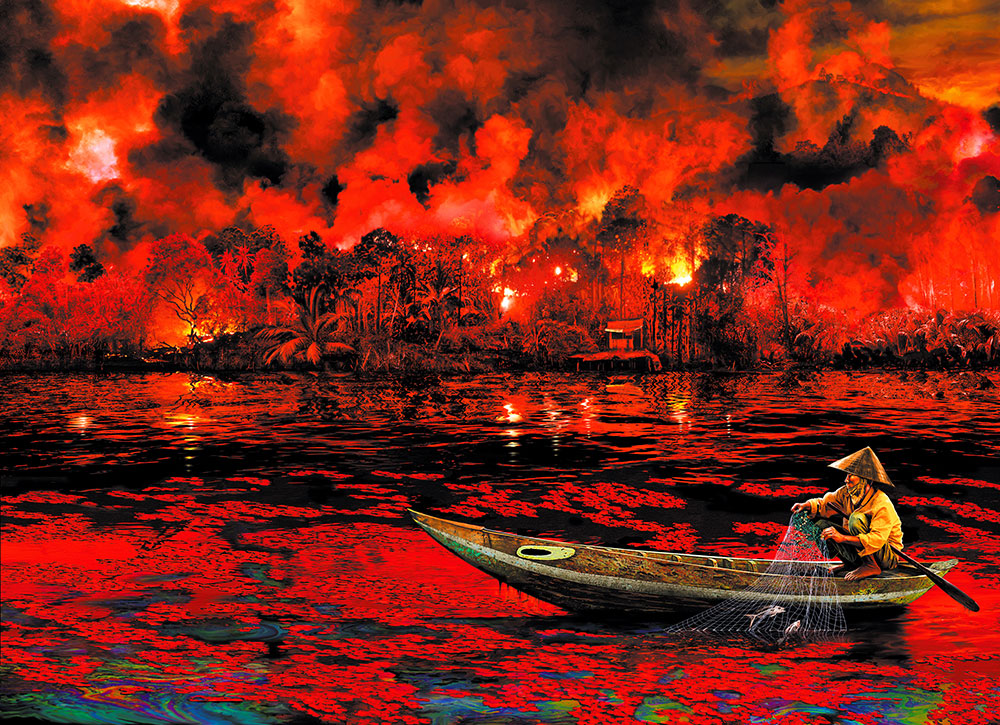
Perfume River, 2014 // A river that crosses the city of Huế, in Vietnam. In the autumn, flowers from orchards upriver from Huế fall into the water, giving the river a perfume-like aroma, but as the petals drift further they begin to rot. A lone fisherman hauls in his catch, but there’s only dead fish. His boat is surrounded by the brightly coloured water stained from petrol and industrial waste leaking into the river. On the river banks, the forests are ablaze!
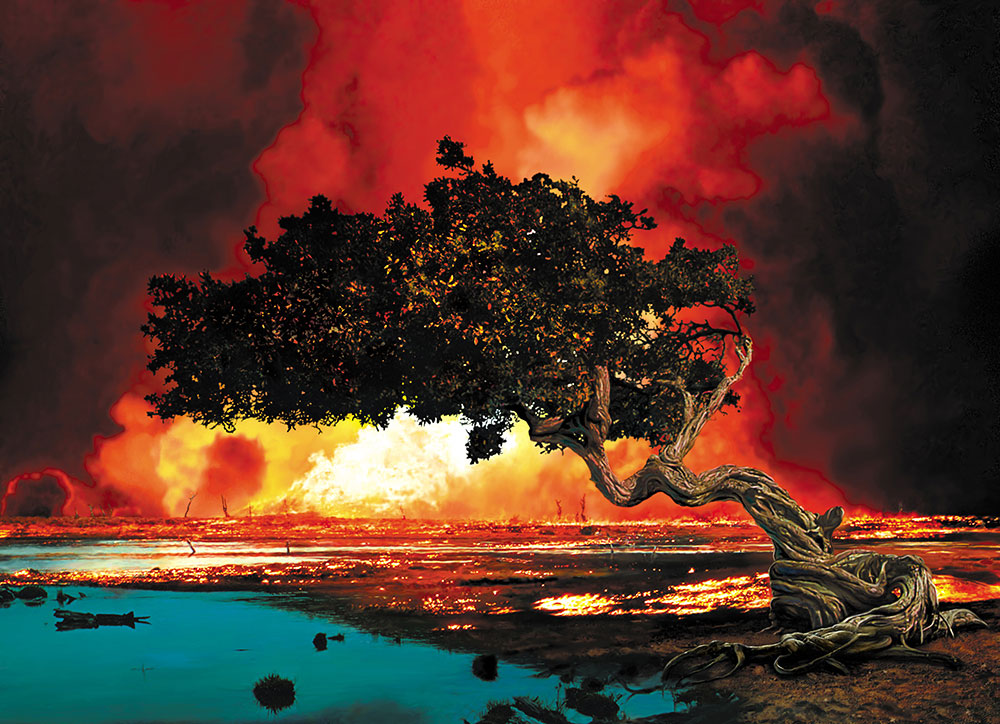
Blind To The Beautiful, 2014 // ‘I just can’t see the beautiful any more.’
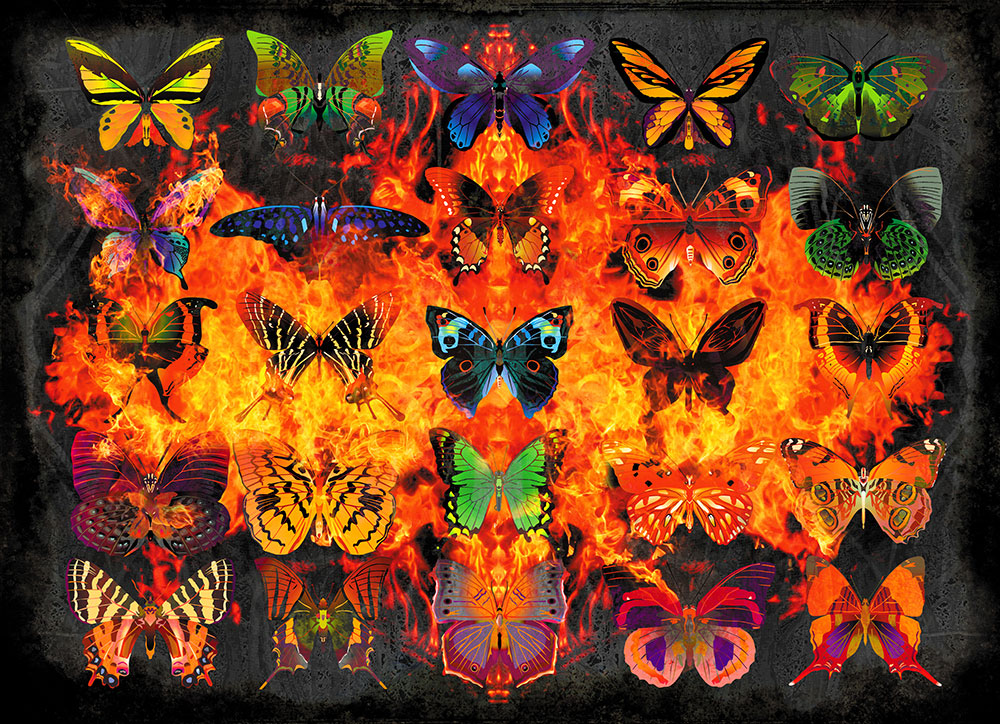
A Masquerade In Silence, 2014 // The butterfly effect is the idea that small events can have severe impacts on a complex system.

High Wood, 2014 // A double-page spread in the book to partly illustrate the High Wood suite of songs. The blue areas by Mark and the pastel drawing of a red tree by Julie Wilkinson.
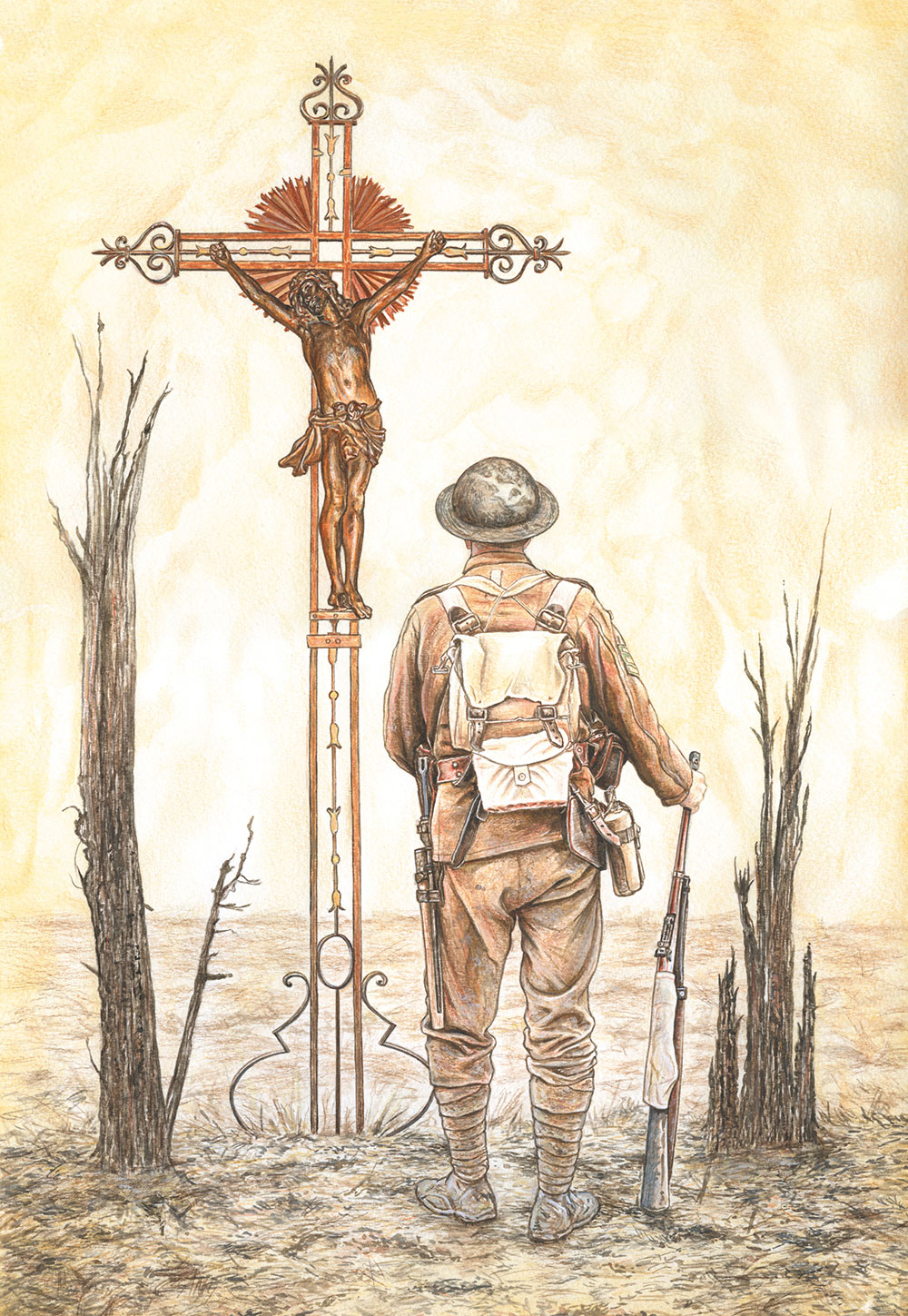
Crucifix Corner, 2014 // Pencil and watercolour drawing by Julie Wilkinson. Crucifix Corner was the name given to several road or track junctions on the Western Front where there was a wayside crucifix, still a common sight across France today. Crucifix Corner south of High Wood, on the Somme battlefield, was on the natural route up to the High Wood area for troops. The original crucifix can still be seen on this site – complete with holes and scars from damage sustained during the Great War.
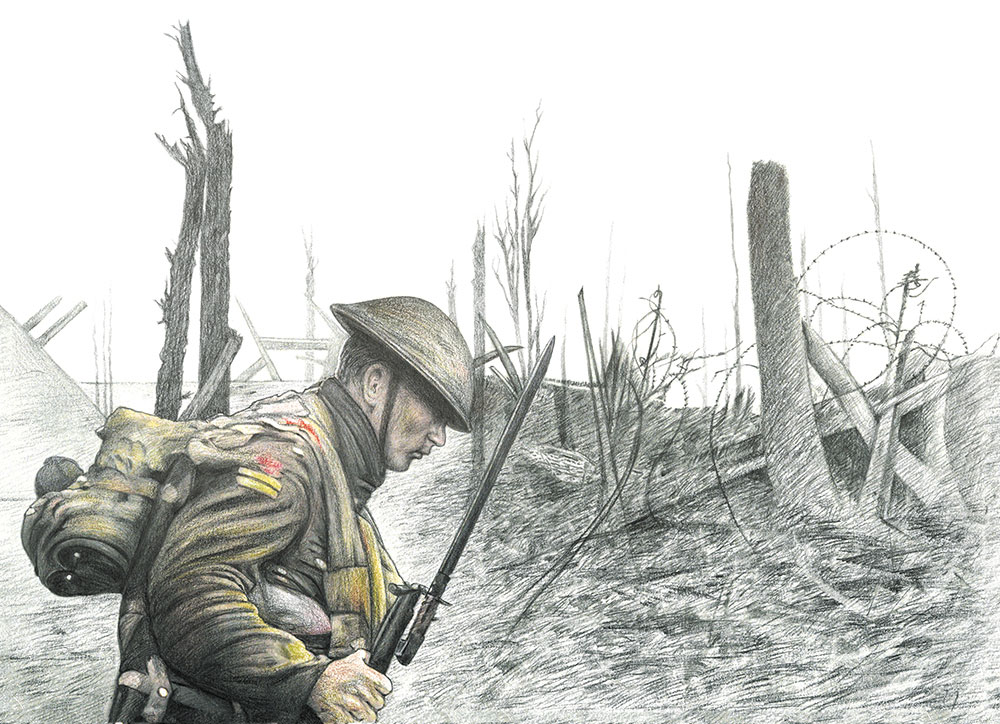
Crucifix Corner – Lancer, 2014 // Pencil drawing by Julie Wilkinson.
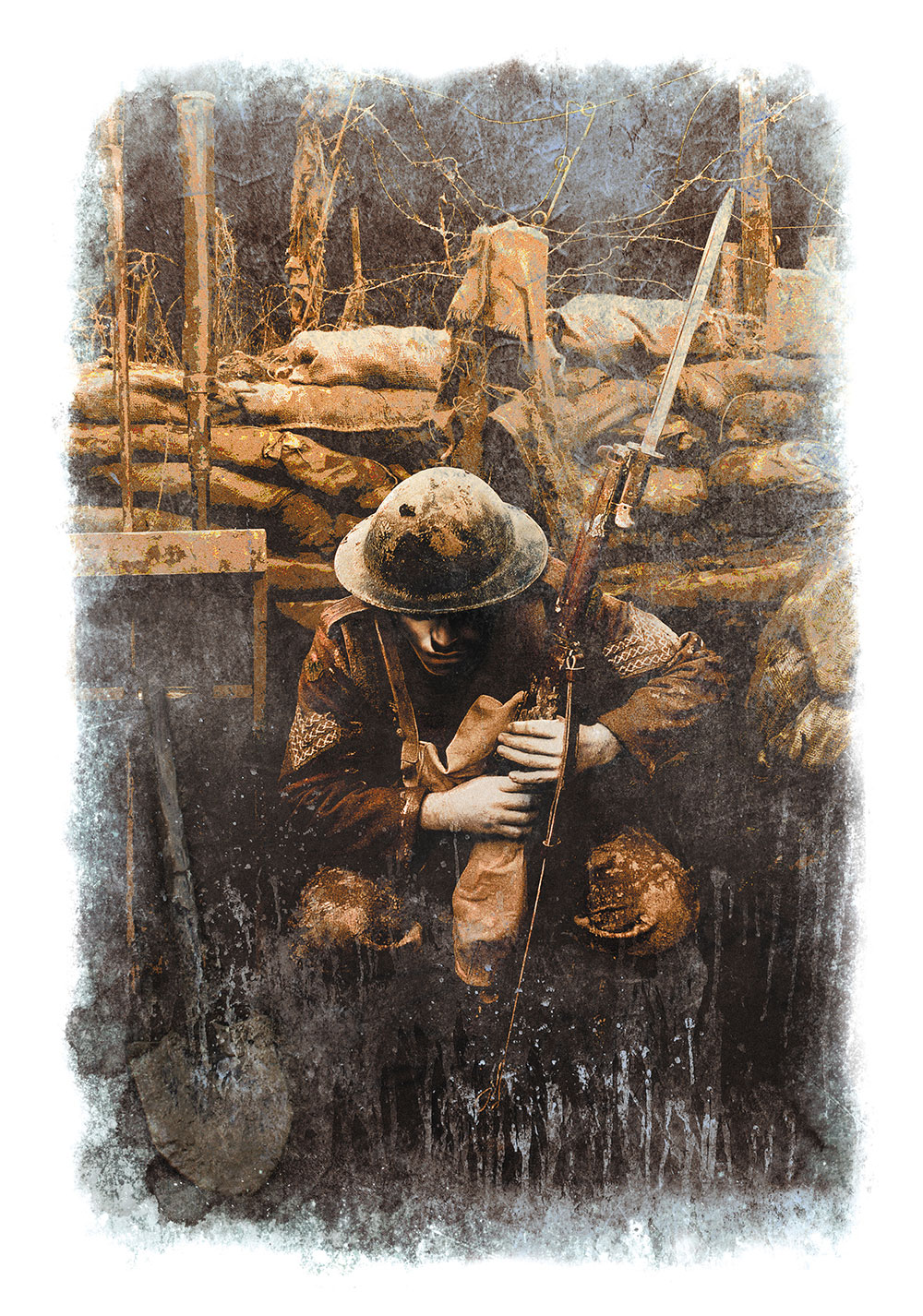
Thistle Alley, 2014 // Illustration of a soldier in the trenches.

Thistle Alley, 2014 // Pen and ink drawing of a soldier climbing out of the trenches.
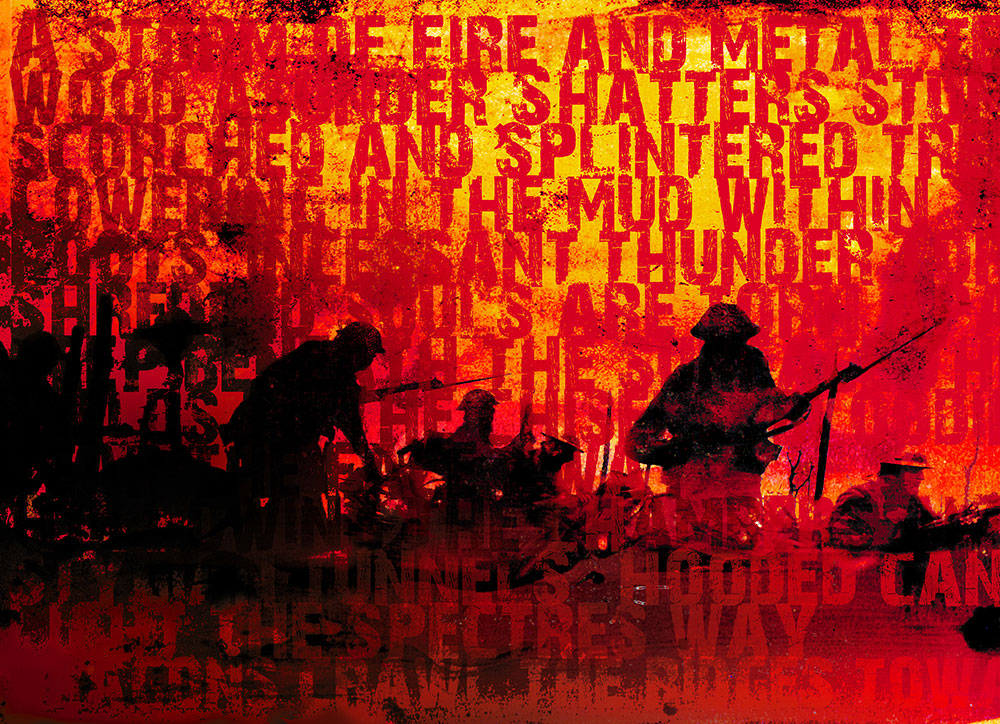
Thistle Alley, 2014 // ‘A storm of fire and metal tears the wood asunder.’

The Leaving, 2014 // ‘In the gnawing bite of winter; the winds, bone chilling, howl,
Pale skies of swirling snowflakes lay a shroud upon the ground.’
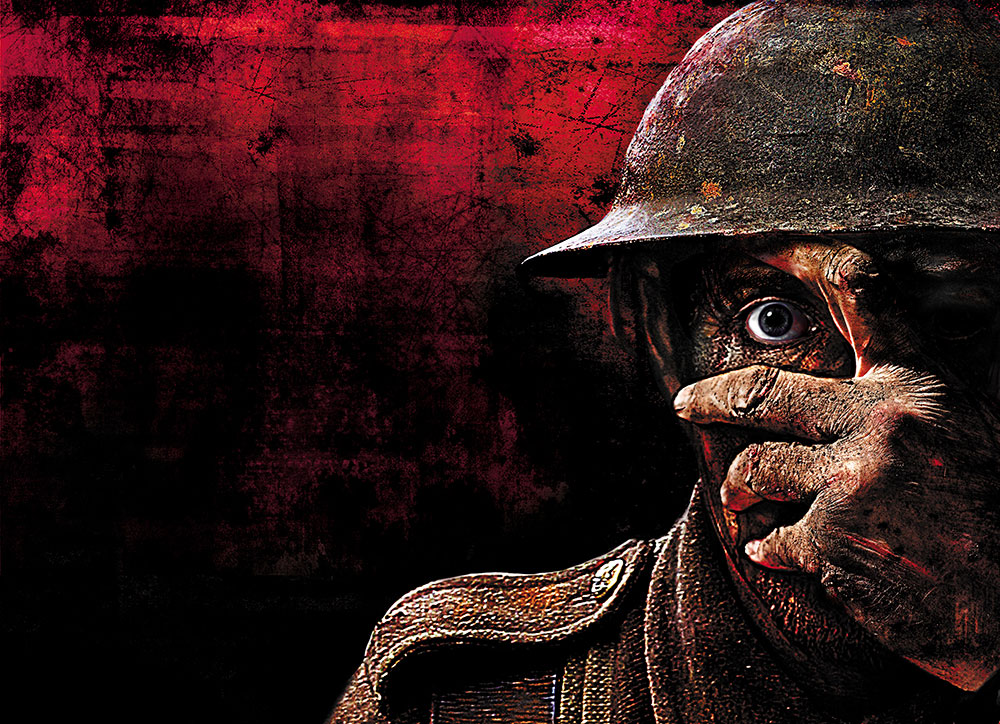
The Leaving, 2014 //
‘The men returned, the war was over
The bells rang out, a country cheered
Behind their eyes they stored the horrors
Behind their smiles they hid their fears.’
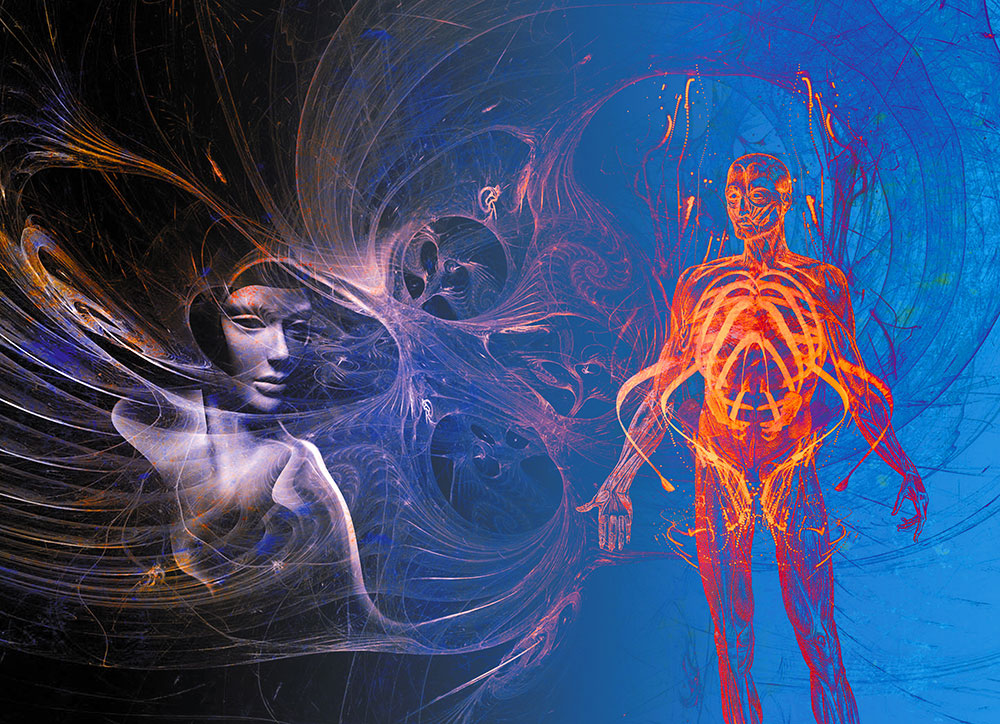
The Twists Of Life, 2014 // ‘The twists of life, the knots of dreams…’
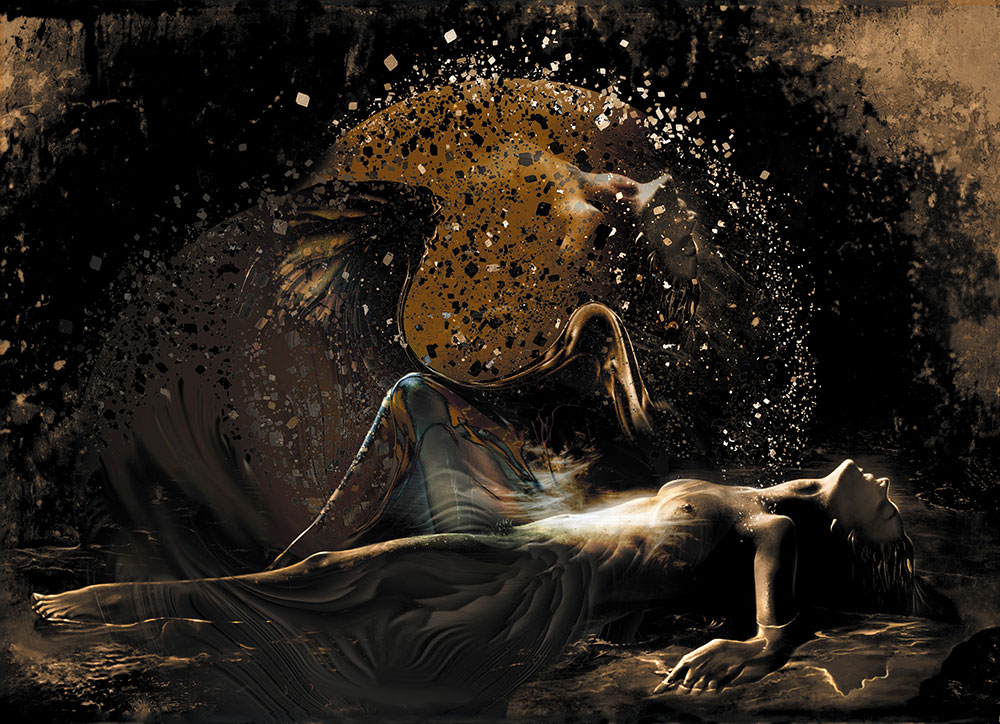
The Great Unravelling, 2014 // The final illustration in the book and the final song on the album. A song about connections, like strands of DNA. ‘The threads that we spin and weave. To uncertain futures we usher them into the light’
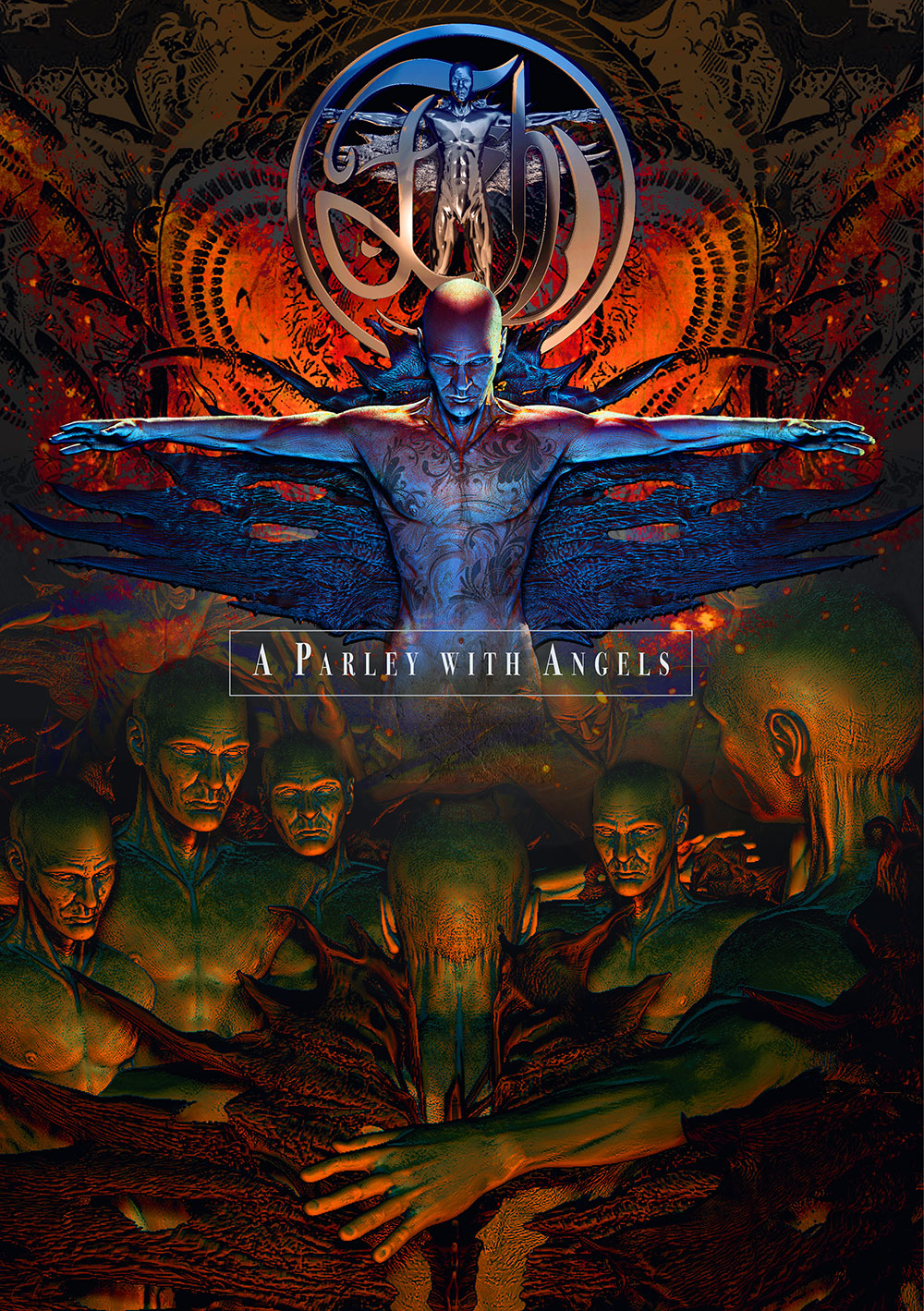
Parley With Angels, 2014 // This was an EP by Fish with 3 tracks as a foretaste to his next studio album, Weltschmerz, and some live material. Mark had been experimenting with 3D software for some time and this was the first project.
Weltschmerz, 2021 // vɛltˌ ʃmɛrts / German noun (literal translation – world pain)
Sadness or melancholy over the state of the world; world-weariness. The final studio album from Fish before he retired. It was going to be emotional! Almost 40 years since they’d first met, with countless stories to illustrate (more involved than just ‘song lyrics’) Mark’s inbox was always full. But this was the last time. There was a line in one of his favourite tracks on the album The Grace Of God: ‘Staring at the heavens through a ceiling in the clouds’, which came to mind when Mark created this image. The tendrils coming out of the character’s back were a hangover from a previous cover idea of having sharp coral-like growths that slowly grew out from the spine and eventually enveloped him. A visual way to express the slow gnawing pain implied by the album title.
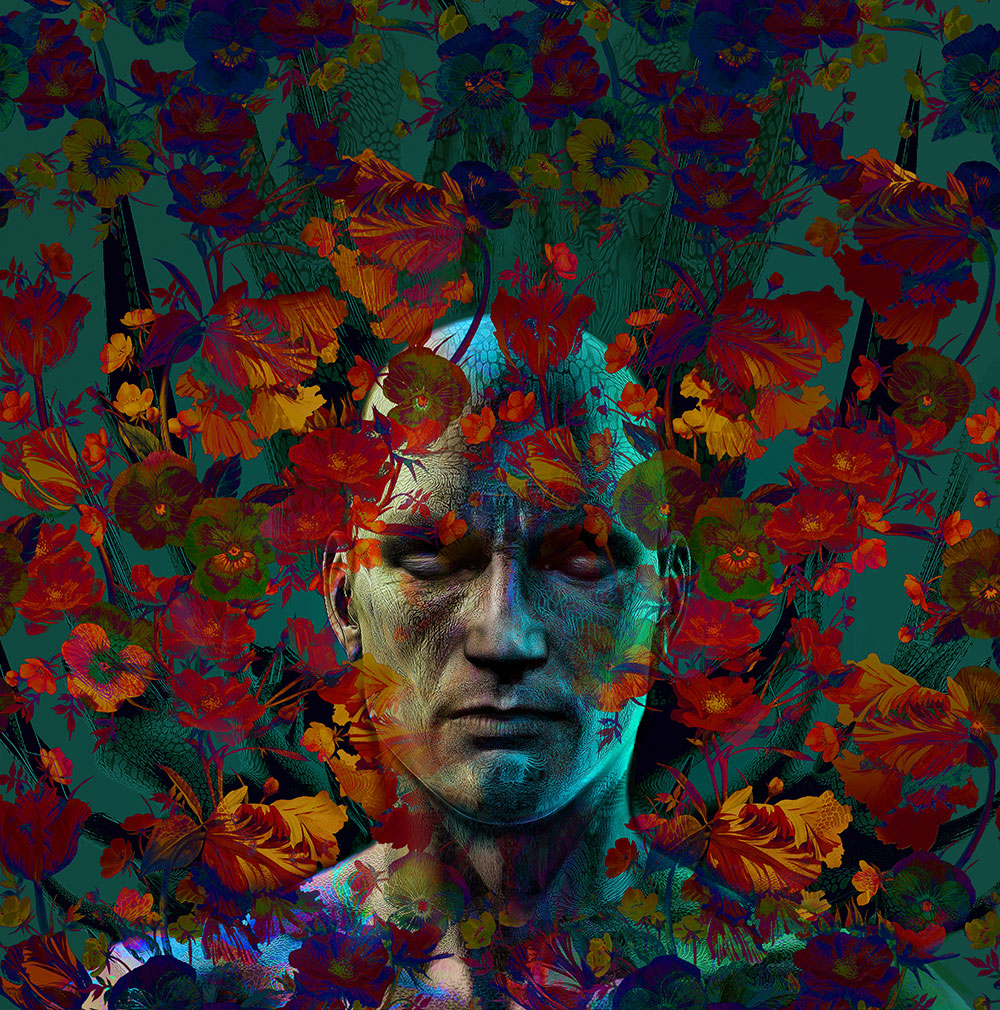
Weltschmerz, 2021 // The Dreamer
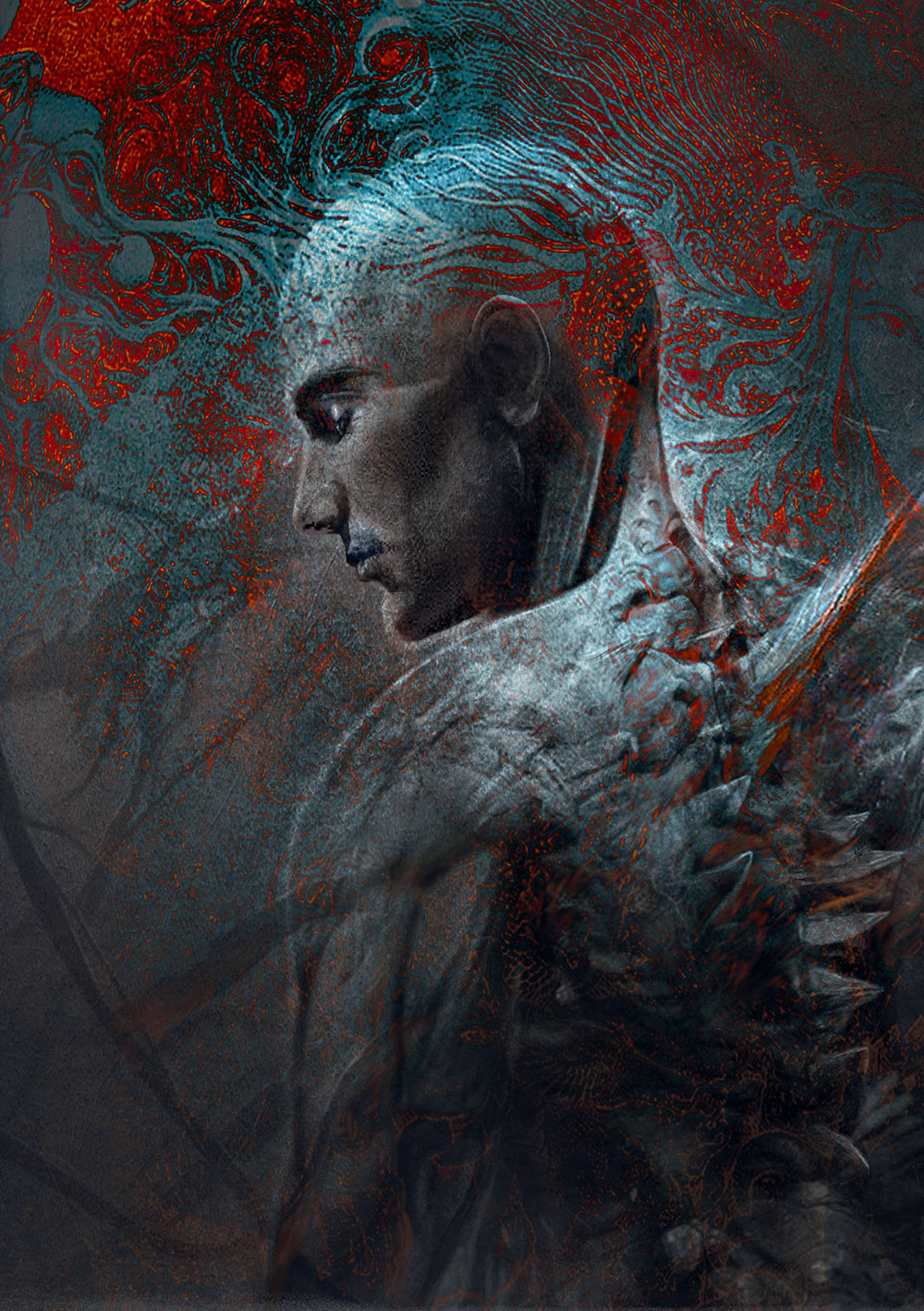
Weltschmerz, 2021 // Melancholia
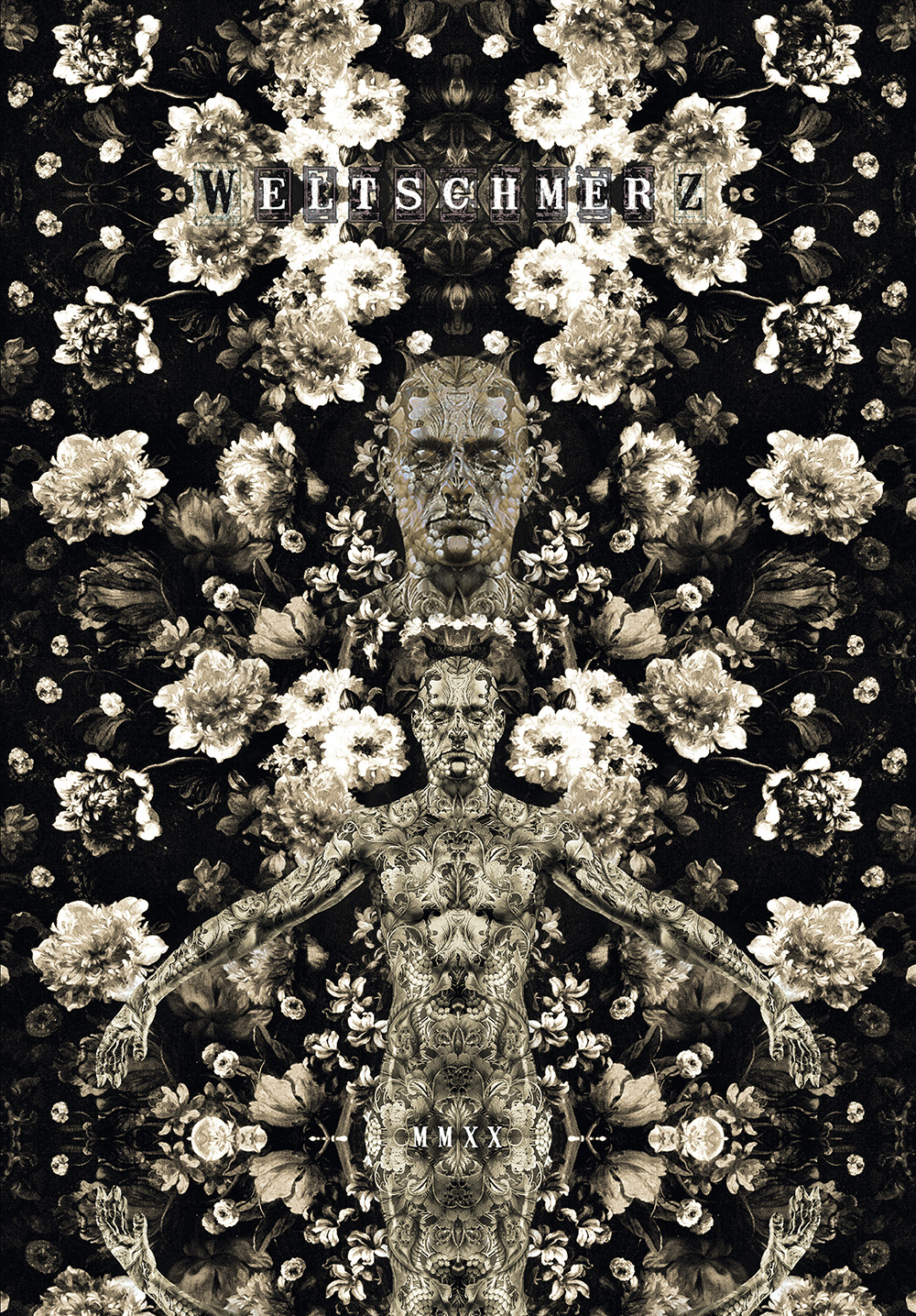
Weltschmerz, 2021 // Title page, Mark’s intention here was to create a kaleidoscopic version of the man with flowers.
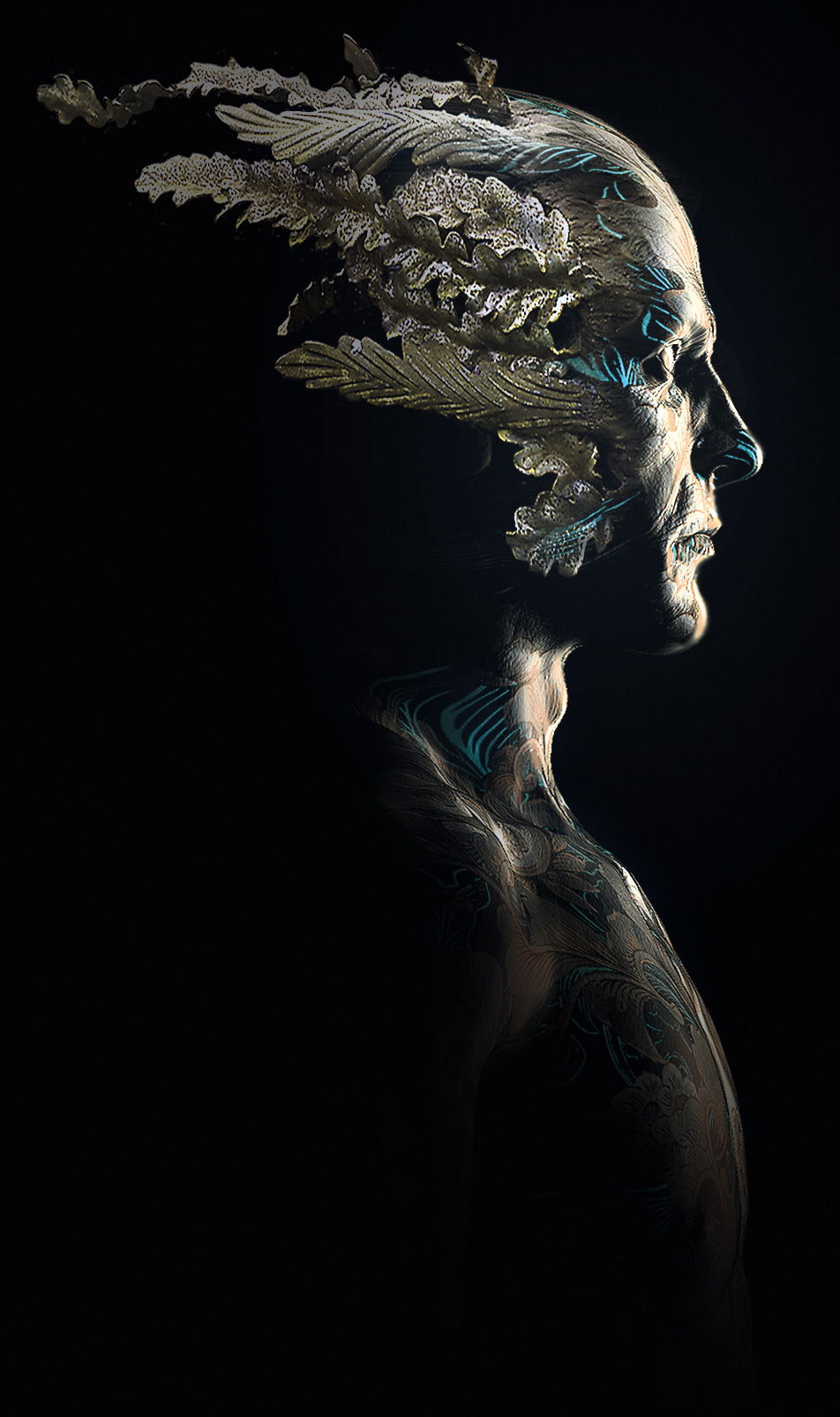
Weltschmerz, 2021 // The Green Man
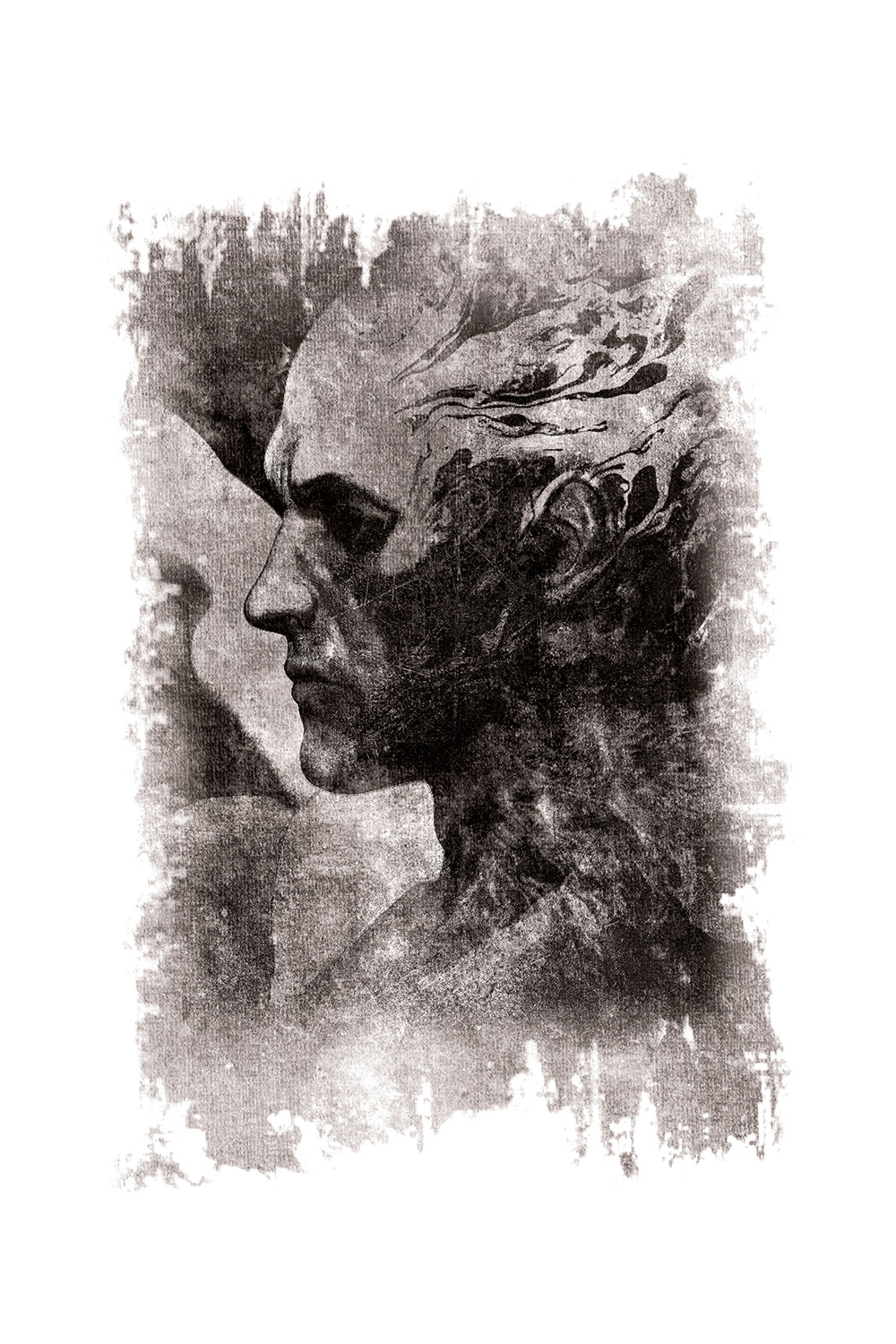
Weltschmerz, 2021 // The Shroud
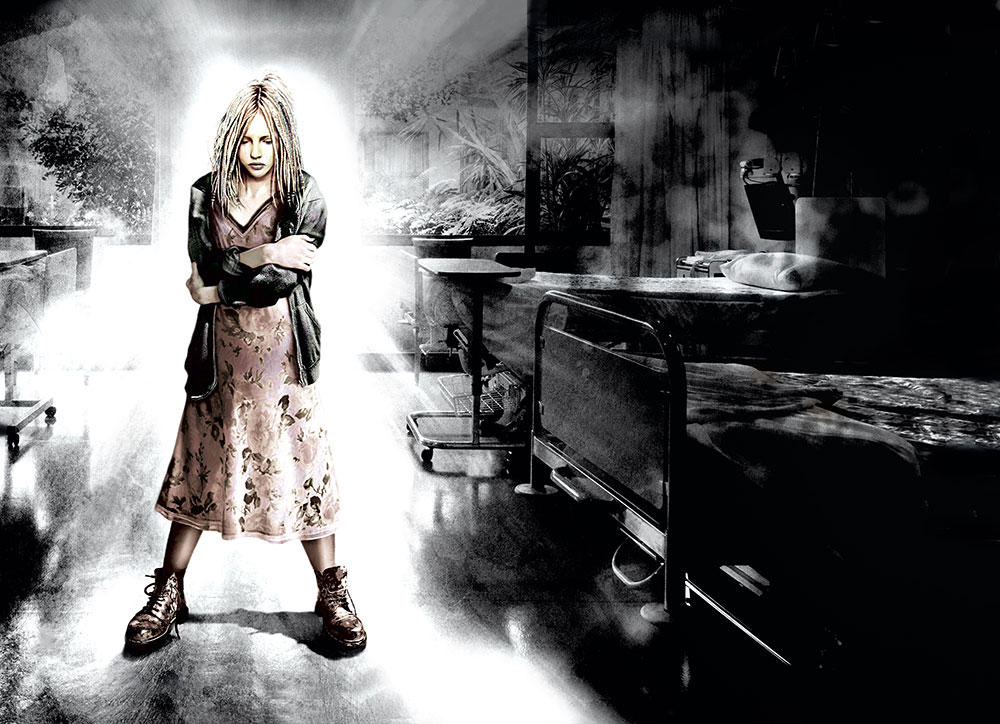
Weltschmerz, 2021 // The Grace of God. ‘Angel with pop star braids staring at the ground, her Docs unlaced, Cotton dress, floral pattern, She wore it on a special day’.
An observation on a hospital ward.
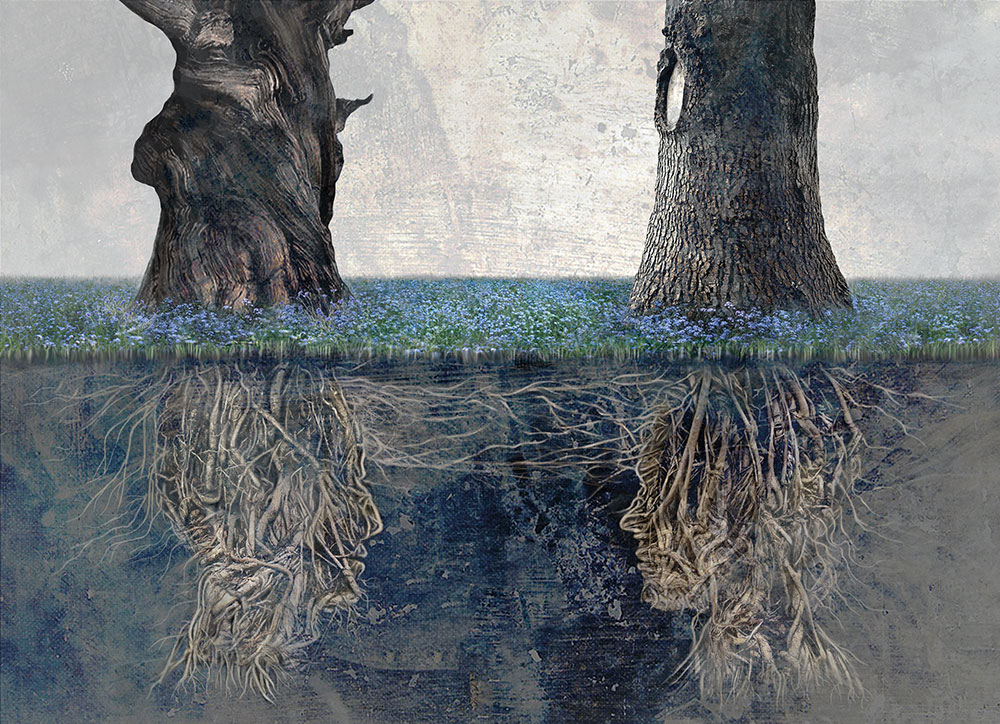
Weltschmerz, 2021 // Garden of Remembrance.
A heartbreaking song about dementia.
‘He’s lost between the here and now
Somewhere that he can’t be found
She’s still here
Her love a ghost of memory, she’ll wait for an eternity.’
Weltschmerz, 2021 // A Gallery for the Garden of Remembrance Music Video
As a continuation of the theme of memory, the music video for Garden of Remembrance sets Fish in a gallery of his own memories. Each image was taken from Mark Wilkinson’s extensive artwork for Fish, curated by Mark’s daughter Hannah who co-directed the video and had unrestricted access to the works. The gallery used not just the well known imagery but also early drafts and sketches that Mark and Fish would have used in the development of the final artwork.
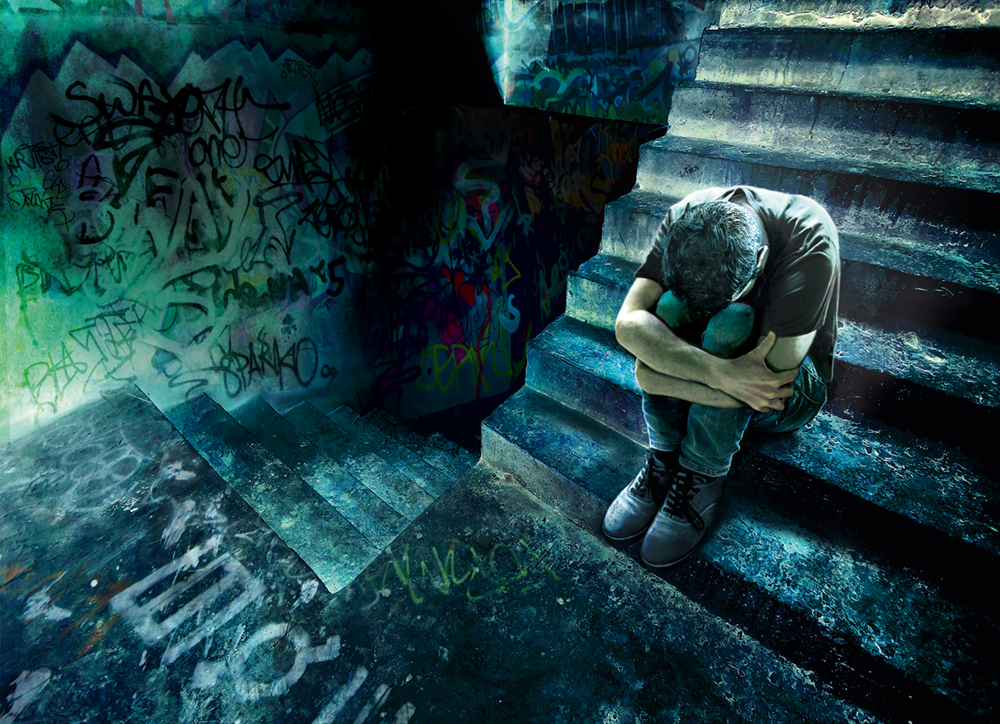
Weltschmerz, 2021 // Little Man What Now?
‘At the end of every day, he just wants to walk away, and give in
Embrace the dark, and curl up in his bed, the curtains drawn.’

Weltschmerz, 2021 // Rose of Damascus
‘She breathes in the wind of change, heady with hope, the promise of freedoms
Leaving the lights behind, a tear in her eye, she heads into the darkness.’
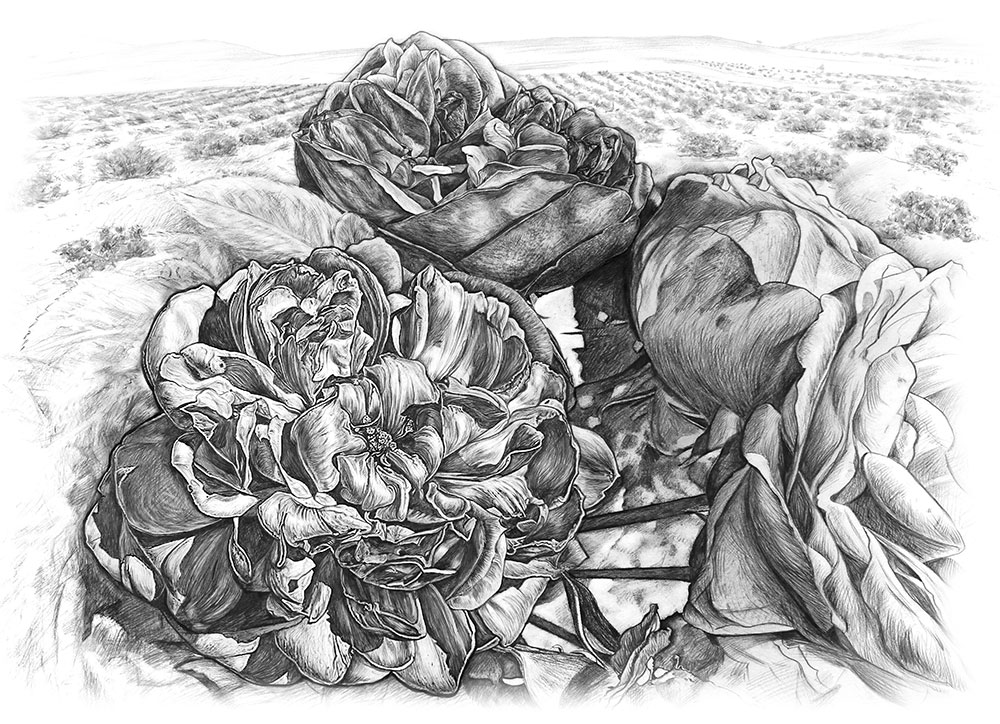
Weltschmerz, 2021 // Rose of Damascus. The rose fields.
‘The sweet familiar fragrance, the delicate fragile petals of the Damask rose.’
Pencil drawing by Julie Wilkinson
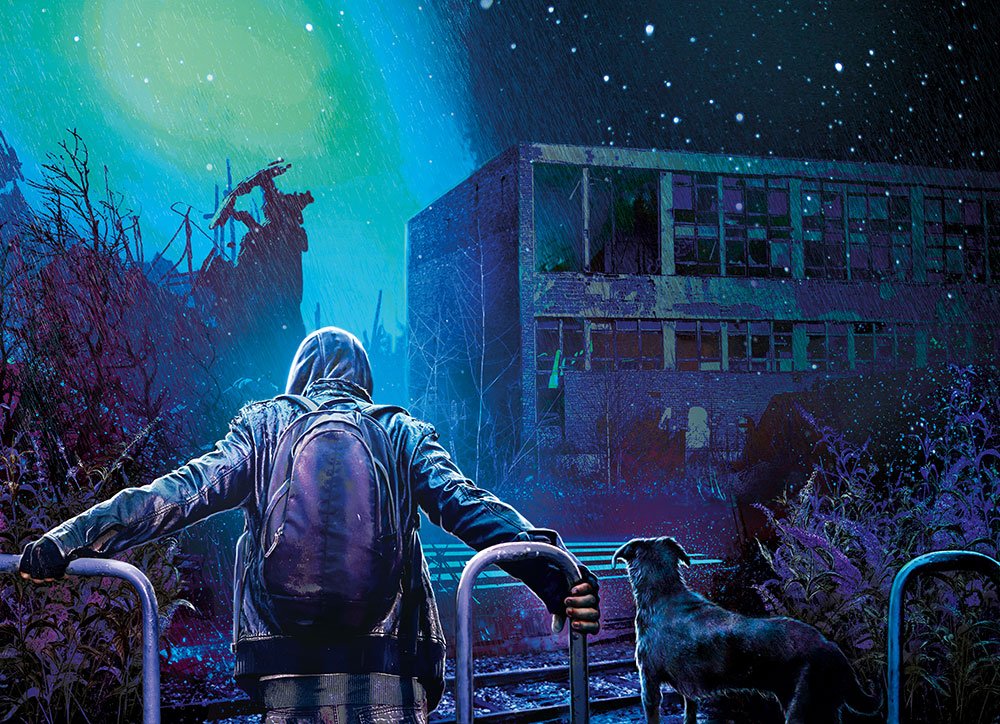
Weltschmerz, 2021 // Waverley Steps (End of The Line)
The Railway Siding.
‘Pitched up his life in a derelict siding, rusting under the stars
Gathering strawberries, plundering apple trees
He lived off the land as the moons crossed the skies
In the first winter sun, with the fires dead and gone
The black dog returned.’

Weltschmerz, 2021 // Waverley Steps (End of The Line)
The homeless man…charcoal drawing.
‘He followed the rails to the bright city lights
From the Waverley steps, he stares at the station
Tied to the black dog, faithful beside him at the end of the line
Catching the coins from wary commuters
Tossed to the hollow of a long empty coffee cup
Counting the cost of all that he’s lost, all that sustains
While snowflakes melt softly on the cold steel rails.’
The Road To The Isles, 2024
42 years ago Mark designed the enduring jester for Marillion, but this will surely be the last time as he pops up on the poster for Fish’s farewell tour. Mark’s idea was to re-use the rusting girder ‘frame’ that first appeared on his second solo album ‘Internal Exile’ in 1991. Kenny Martin who originally photographed Fish for the central portrait, returned for this updated version using the same pose and lighting, but this time the scenes outside the frame reflected Fish’s entire career both with Marillion and during his solo years. The one new character is a Highlander, holding the hourglass that appears on Fish’s first solo album ‘Vigil In A Wilderness of Mirrors’ (which is also referenced with the fighter jets). He walks the long winding road to the isles. Clockwise from there is the Incubus from ‘Fugazi’, Tláloc the ‘Raingod’, the dreamer from ‘Weltschmerz’, the boat from ‘13th Star’, the landscape from ‘Suits’ appears by the tree from ‘Feast Of Consequences’, with a few crows from ‘Field of Crows’ in the distance. Below that is an old film camera which represents ‘Fellini Days’ and the film reel from ‘Sunsets on Empire’. The ‘Jester’ from ‘Script’ also hinted at in the pocket of Torch in ‘Clutching At Straws’, the boy and magpie from ‘Misplaced Childhood’ complete the circle.
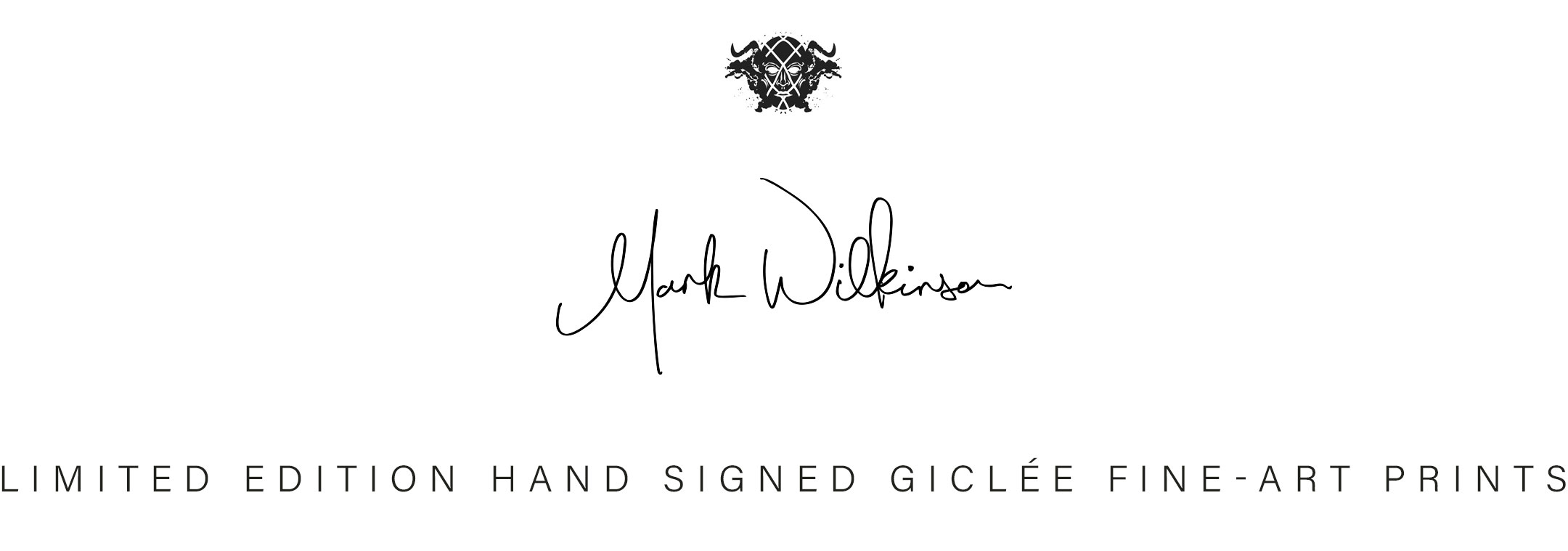
Own Your Own // Prints are available to purchase directly from our online shop. They are strictly limited so don't miss out on owning these unique collector's items.
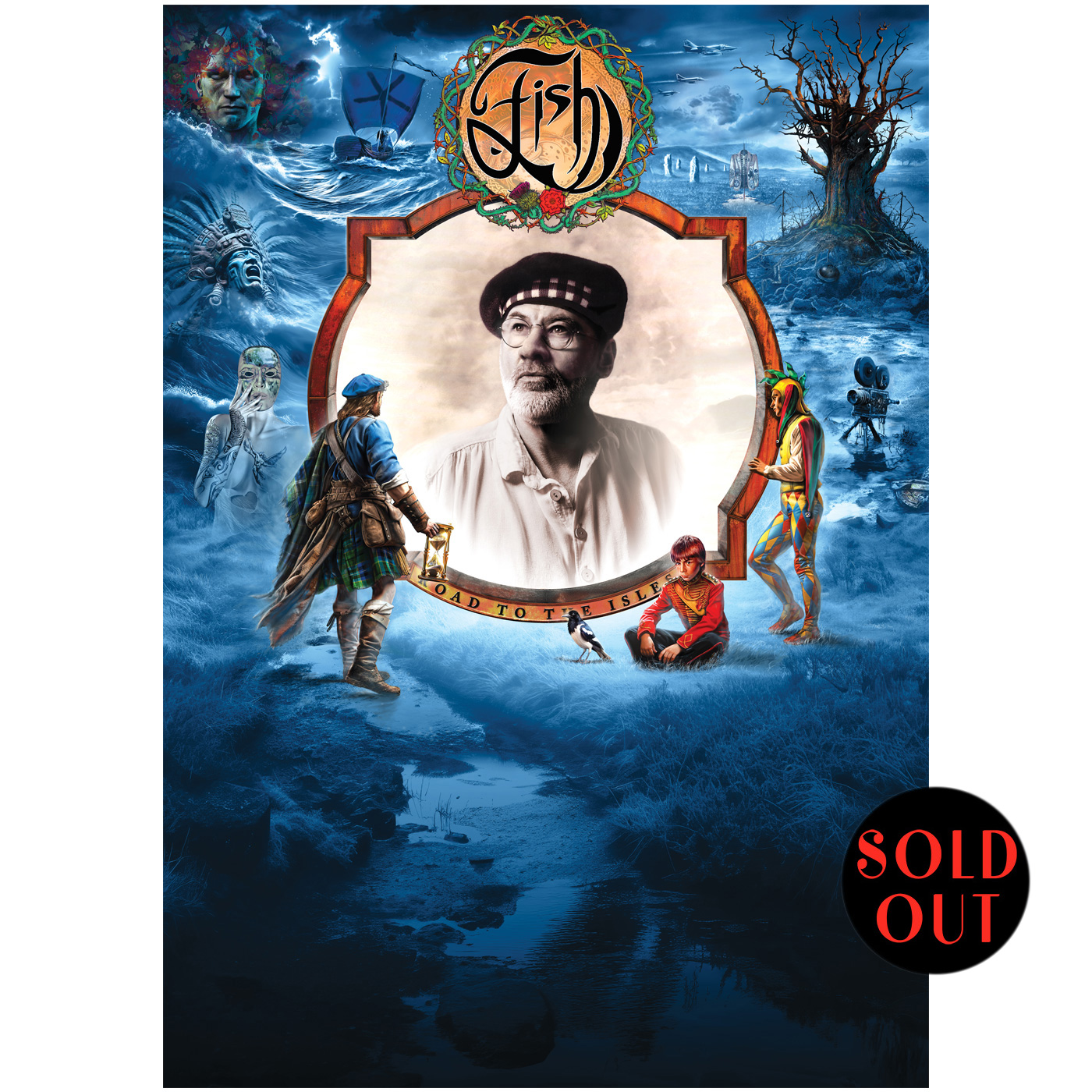
Fish
road to the isles // 2024
Iron Maiden >
Marillion >
Fish >
Judas Priest >

